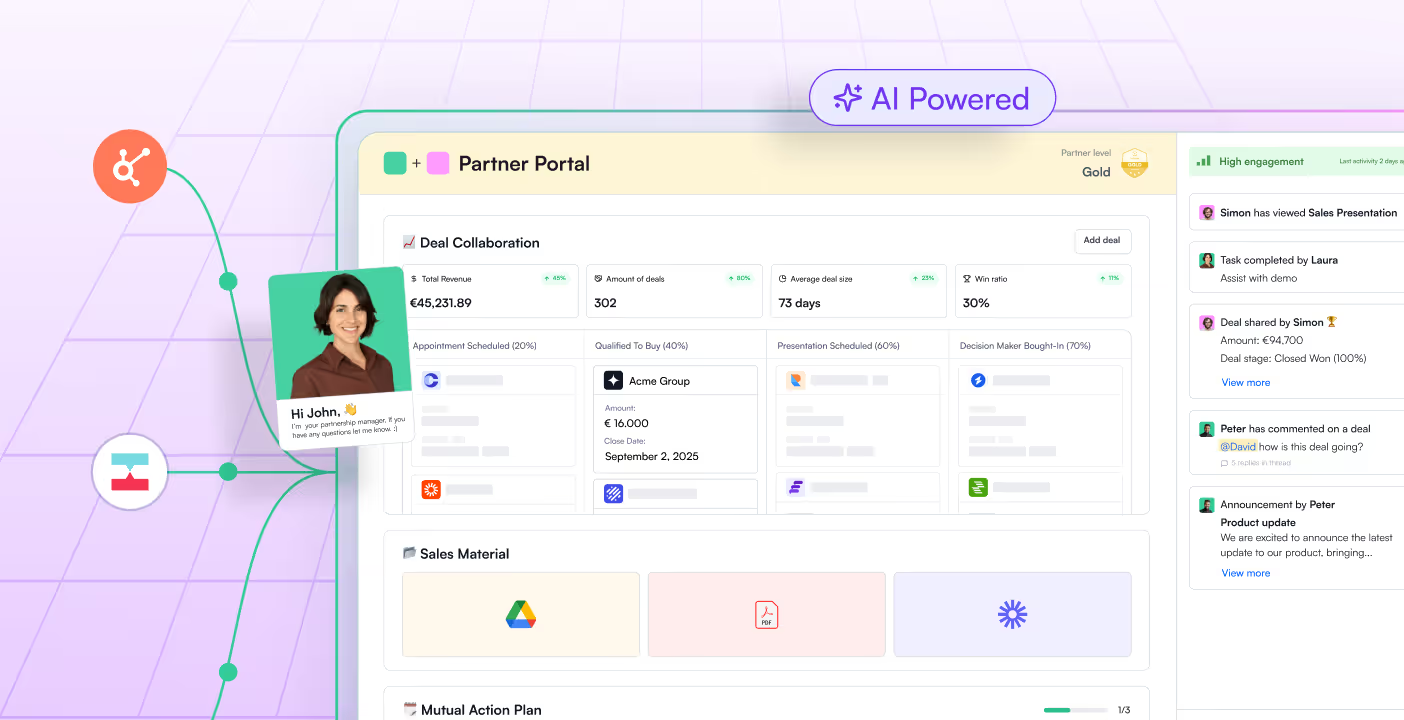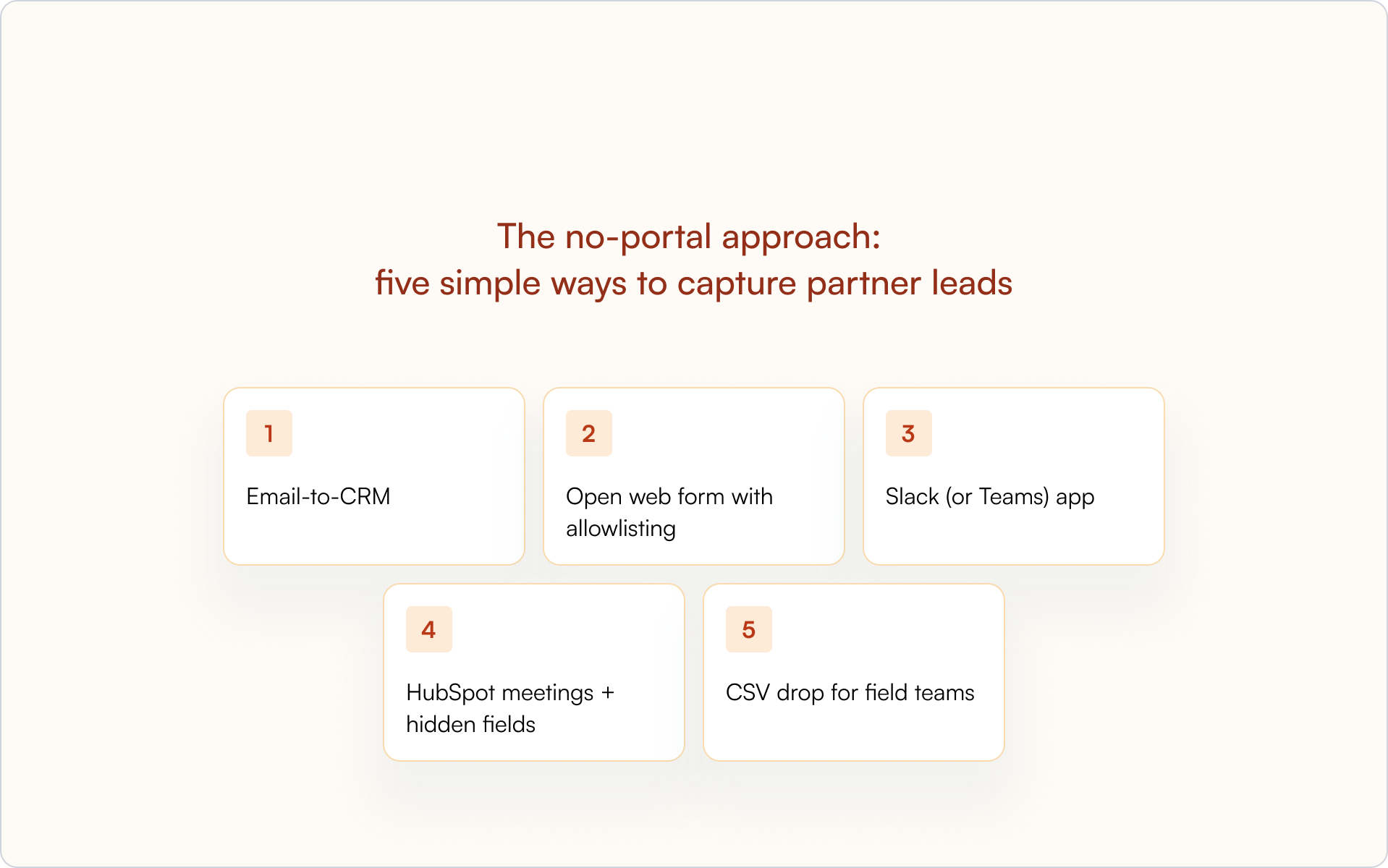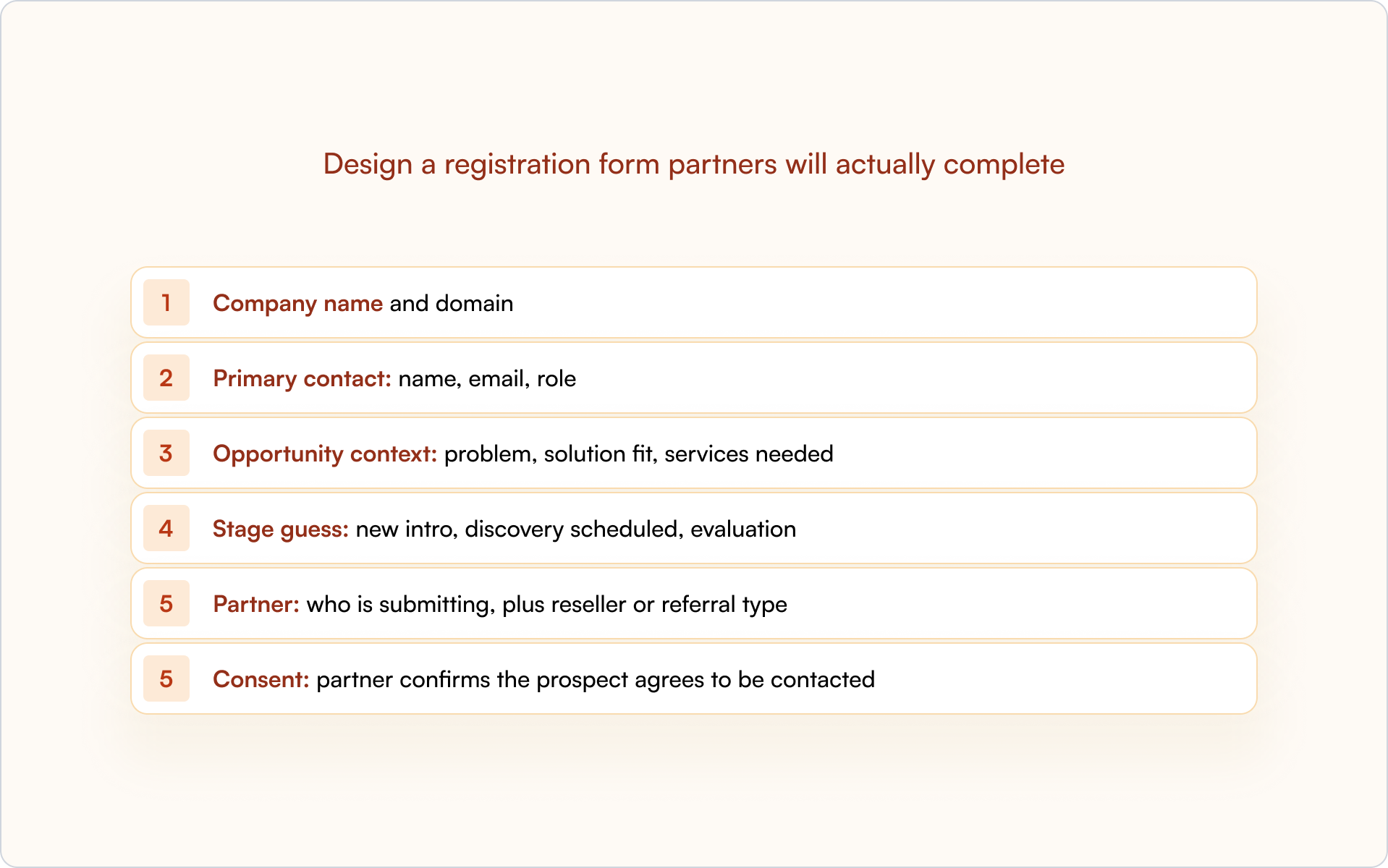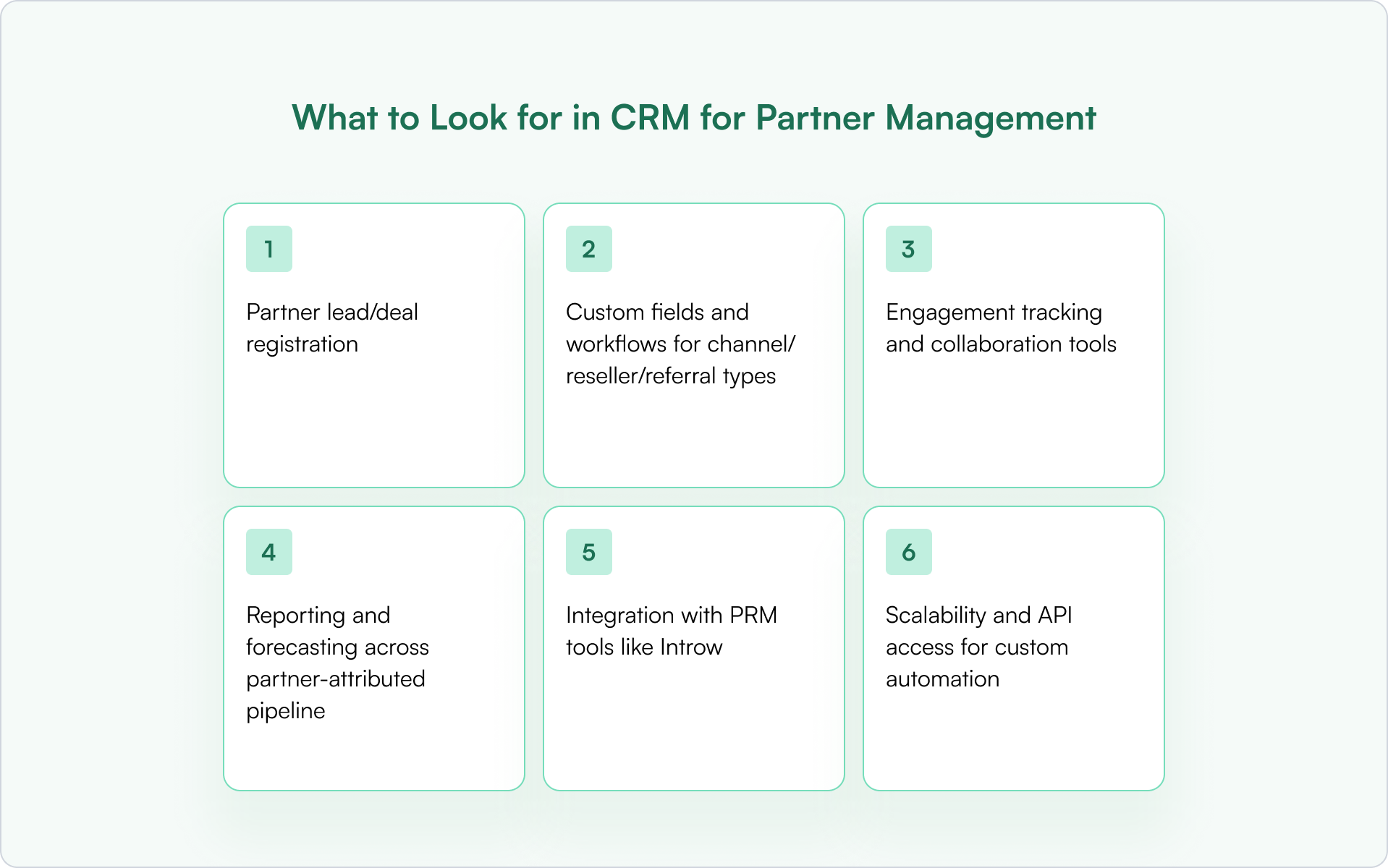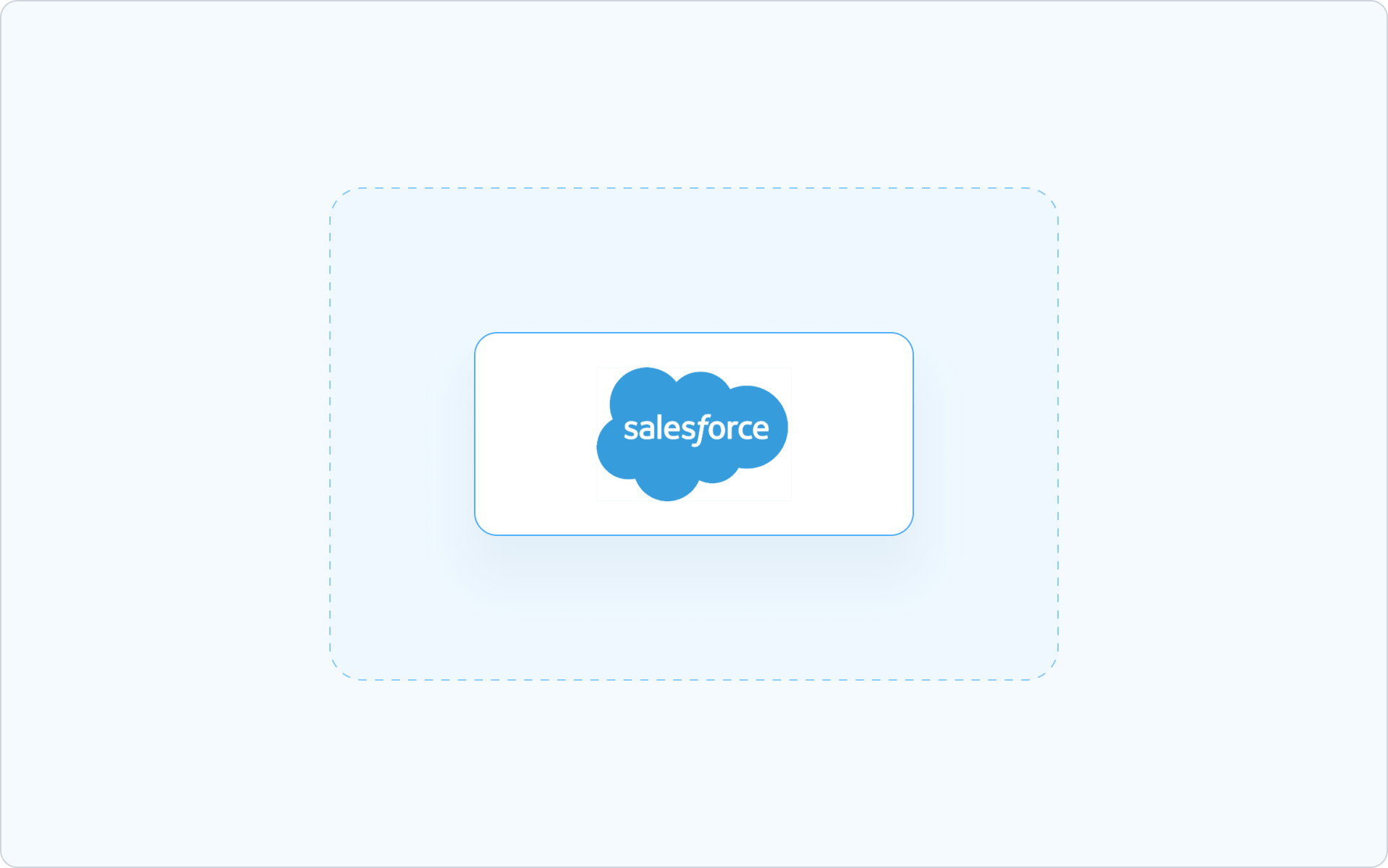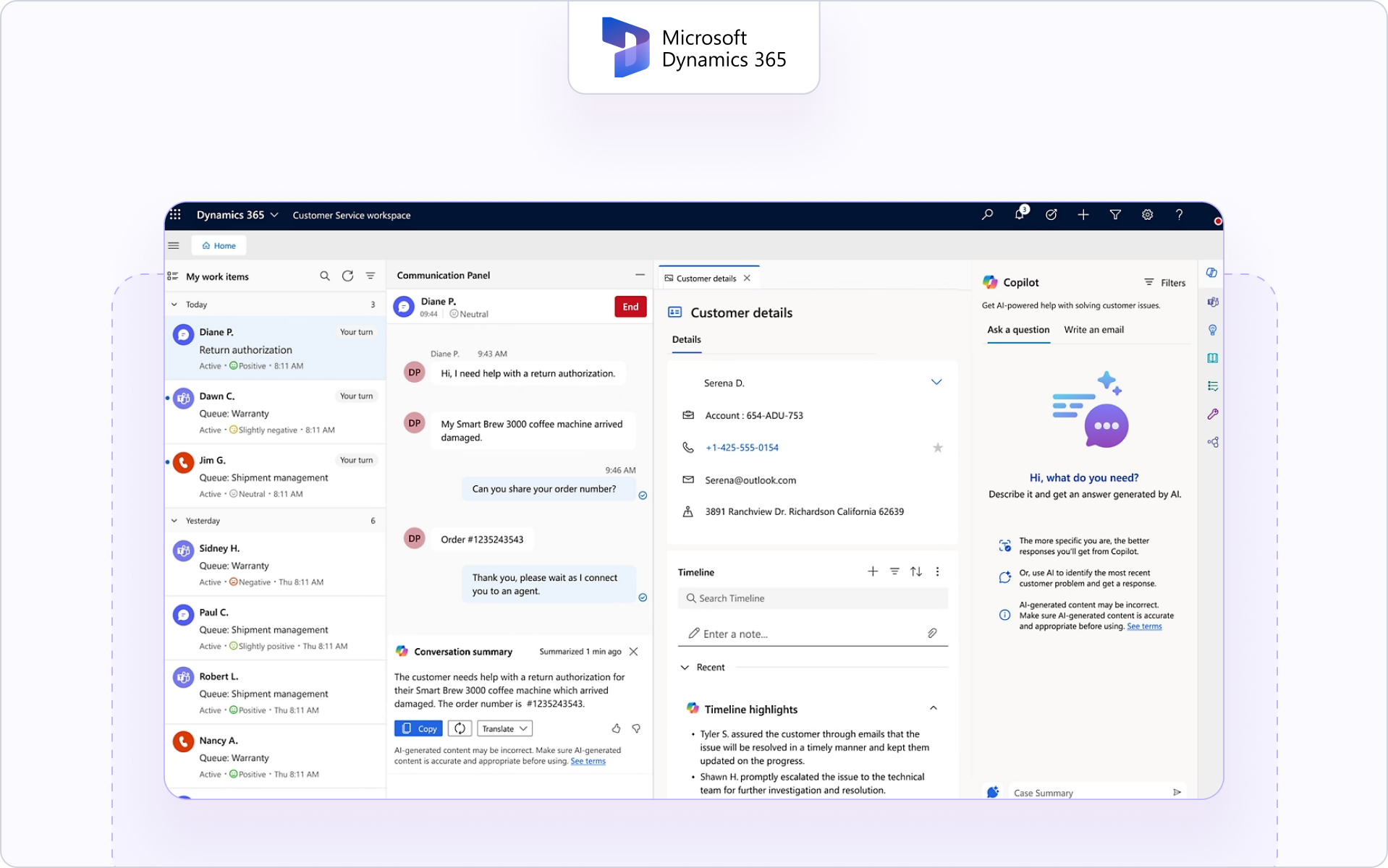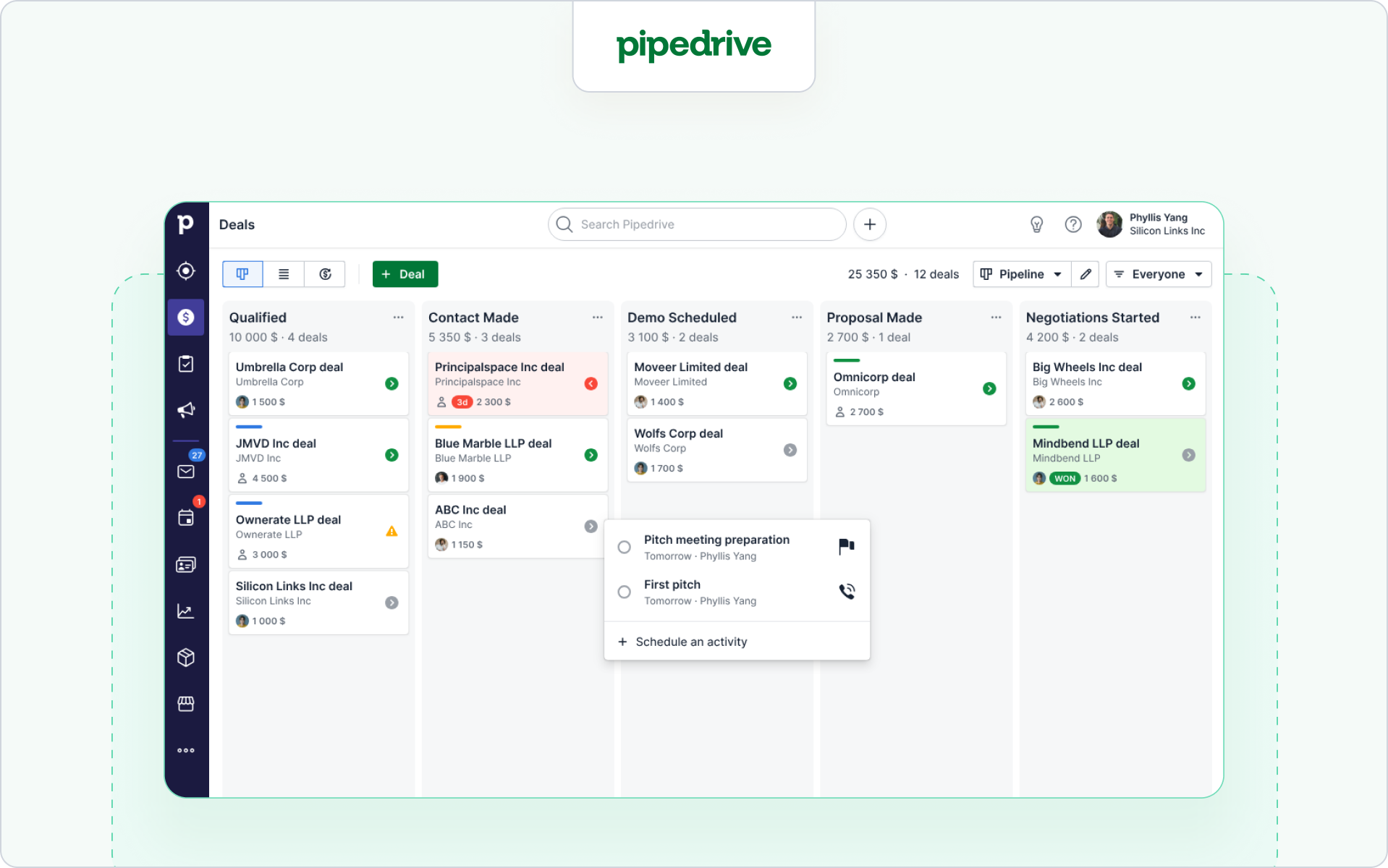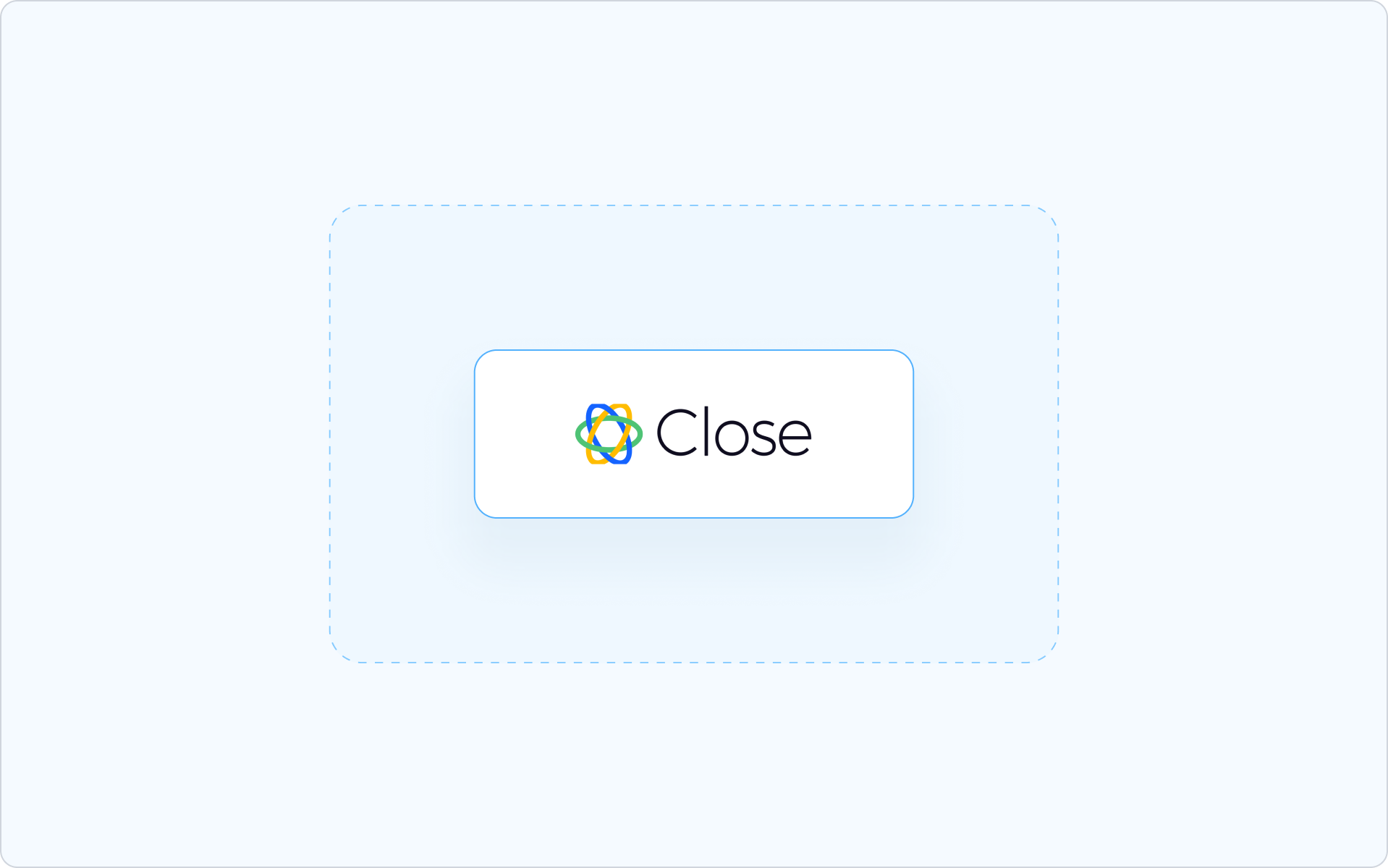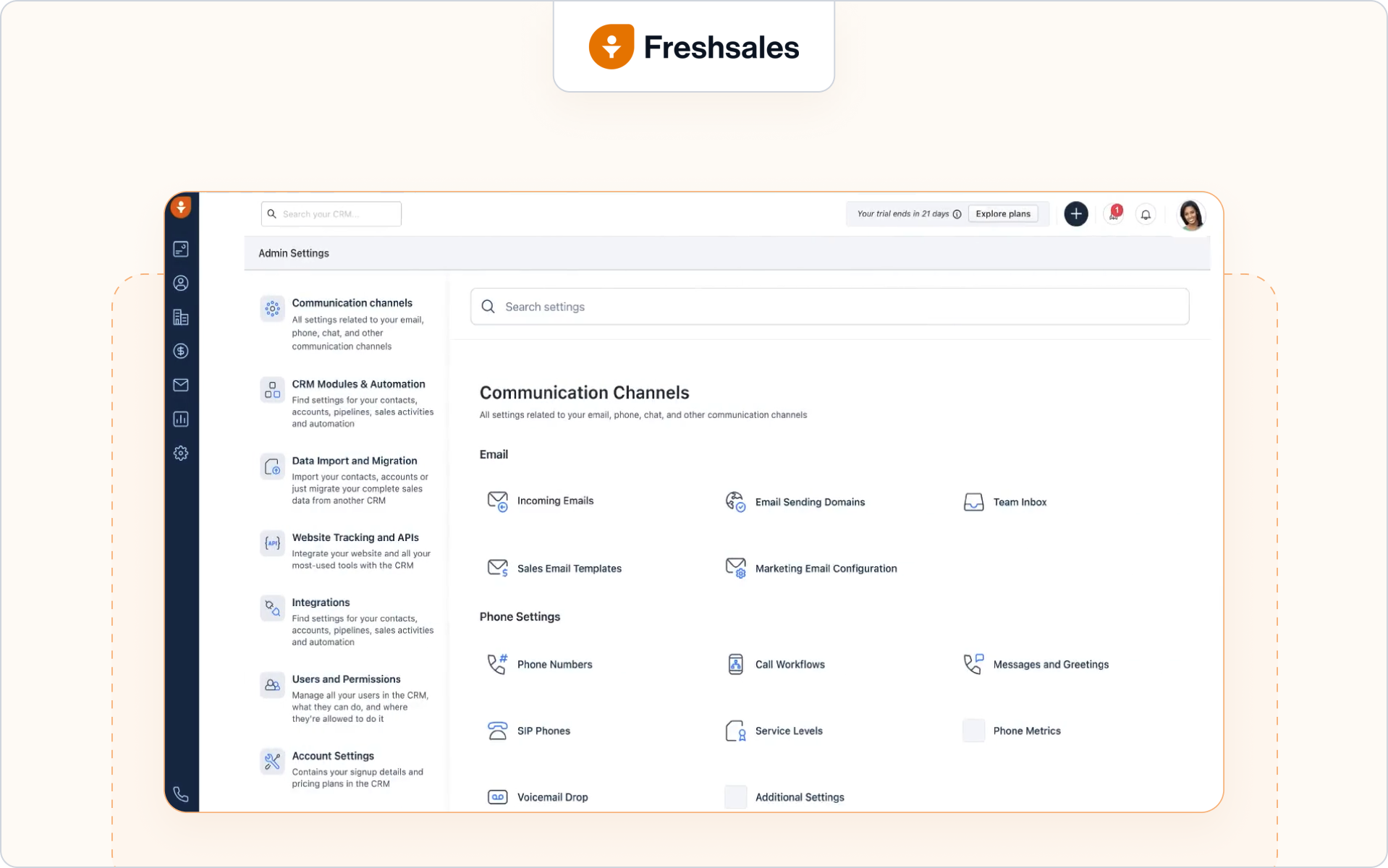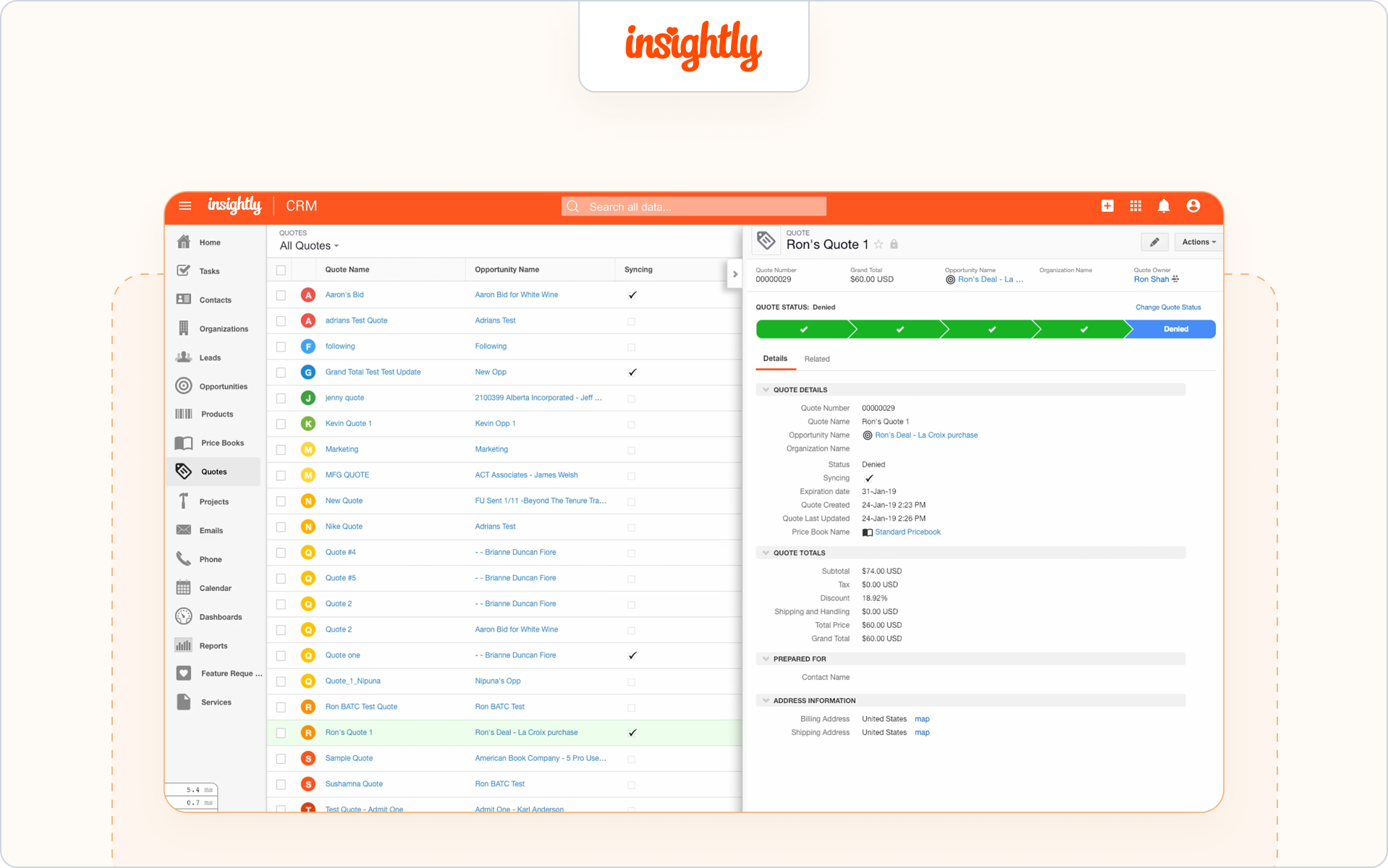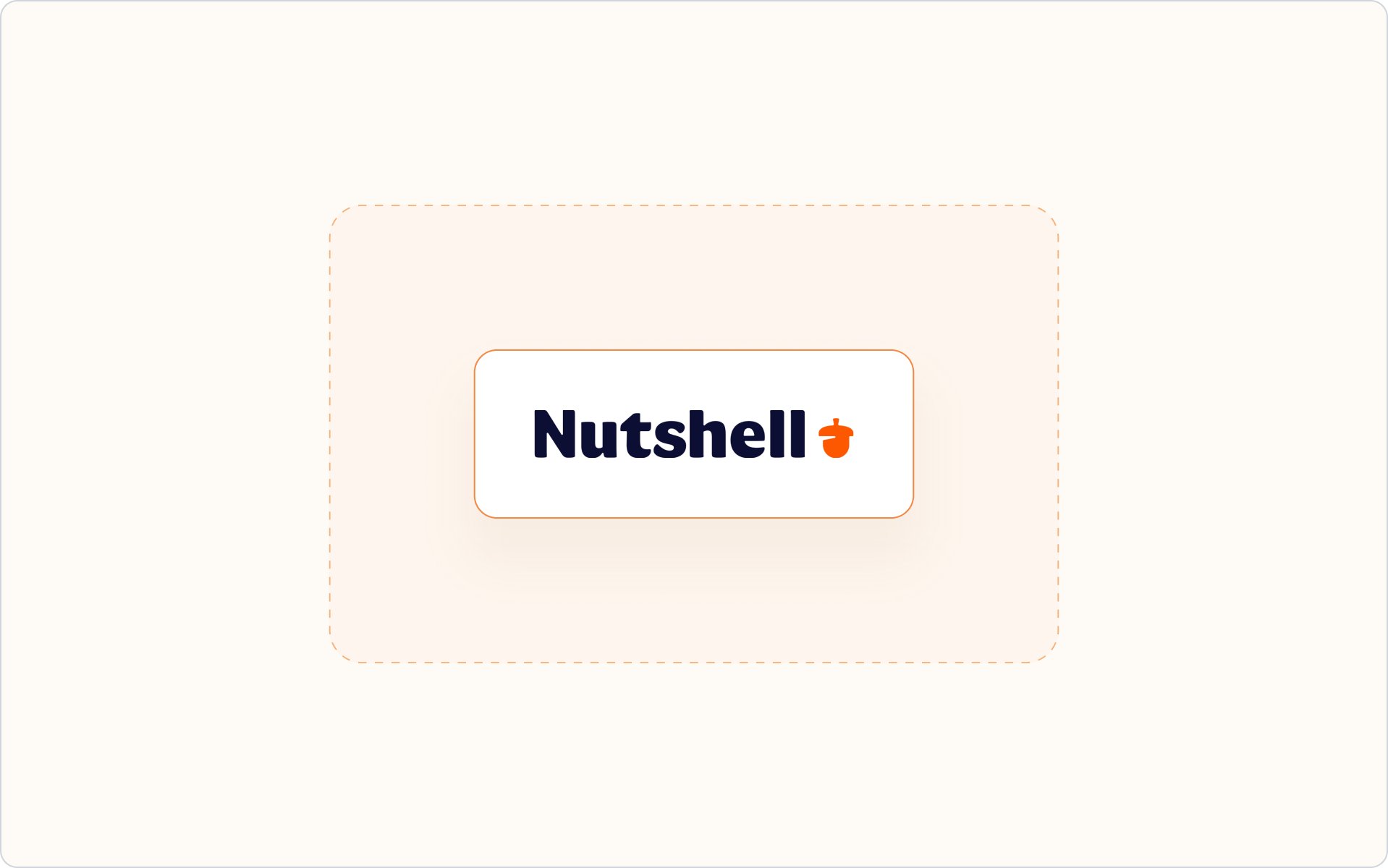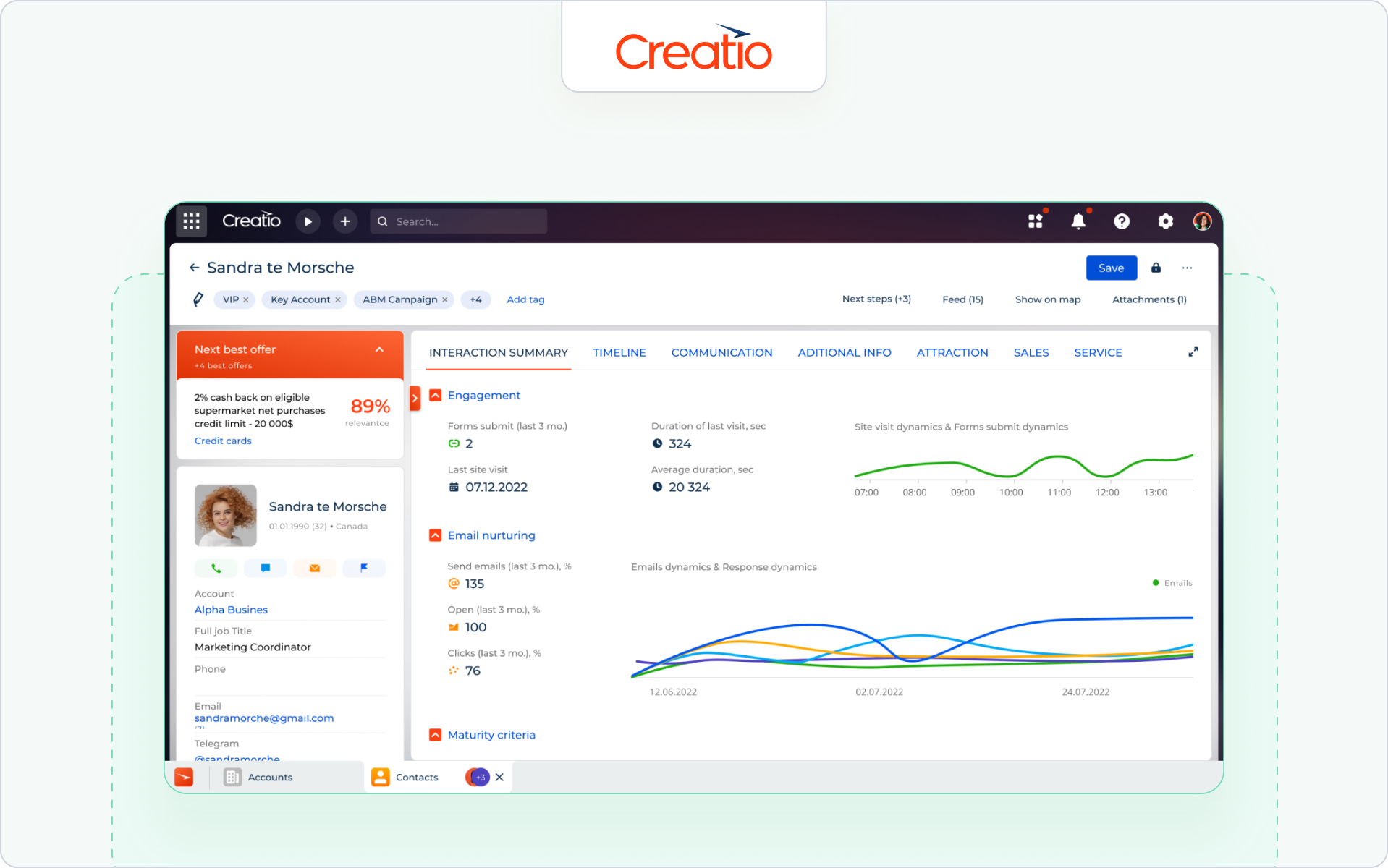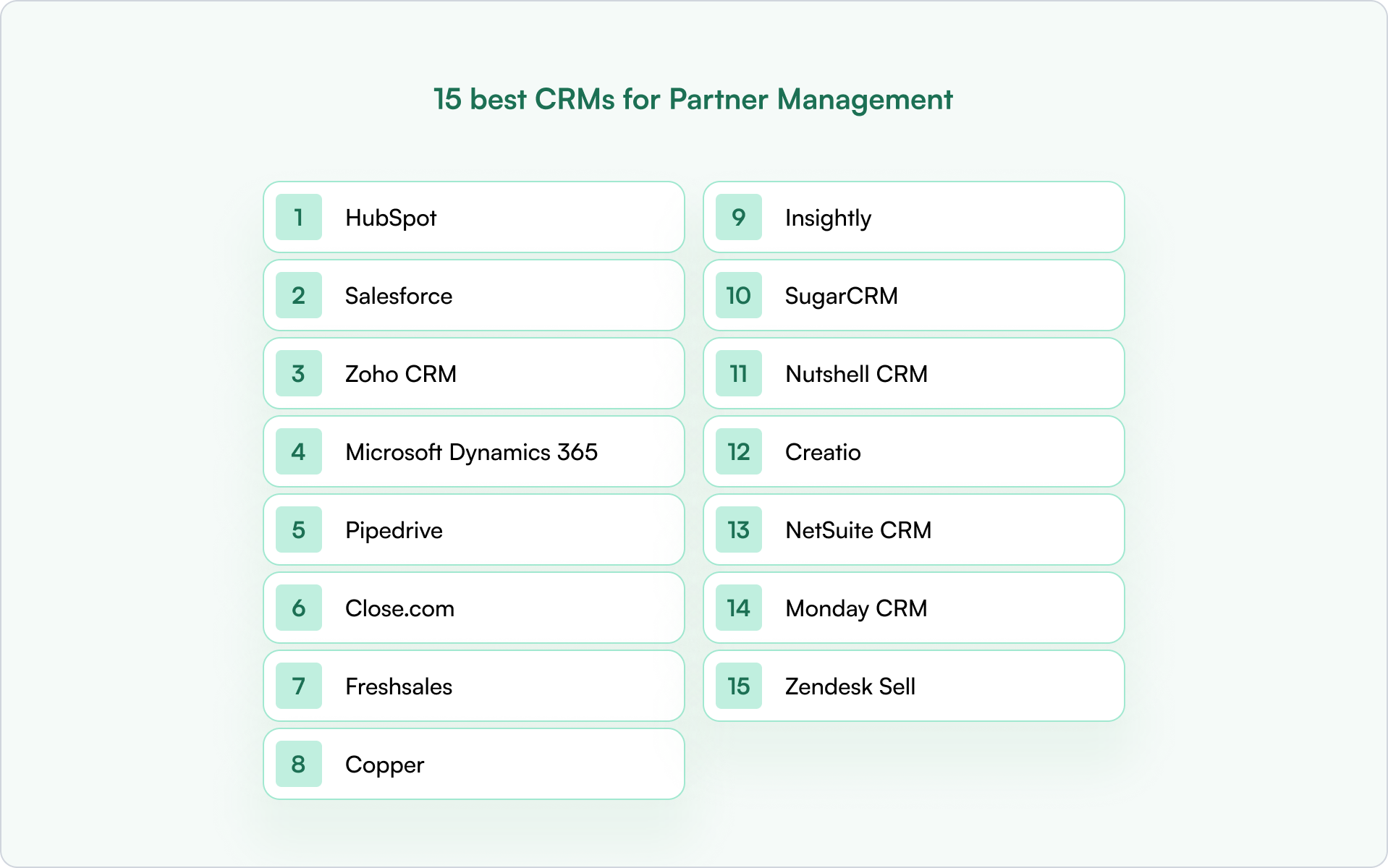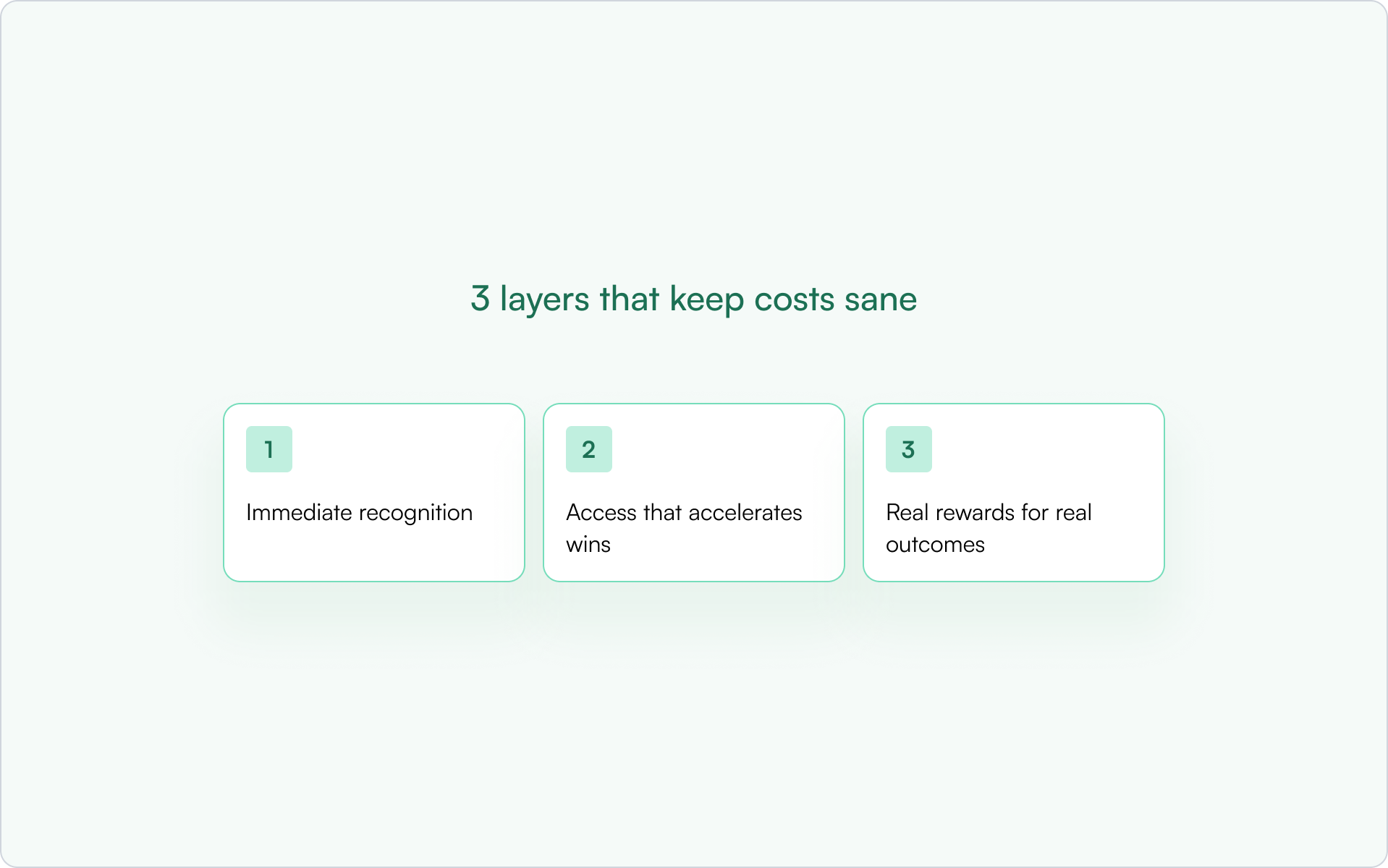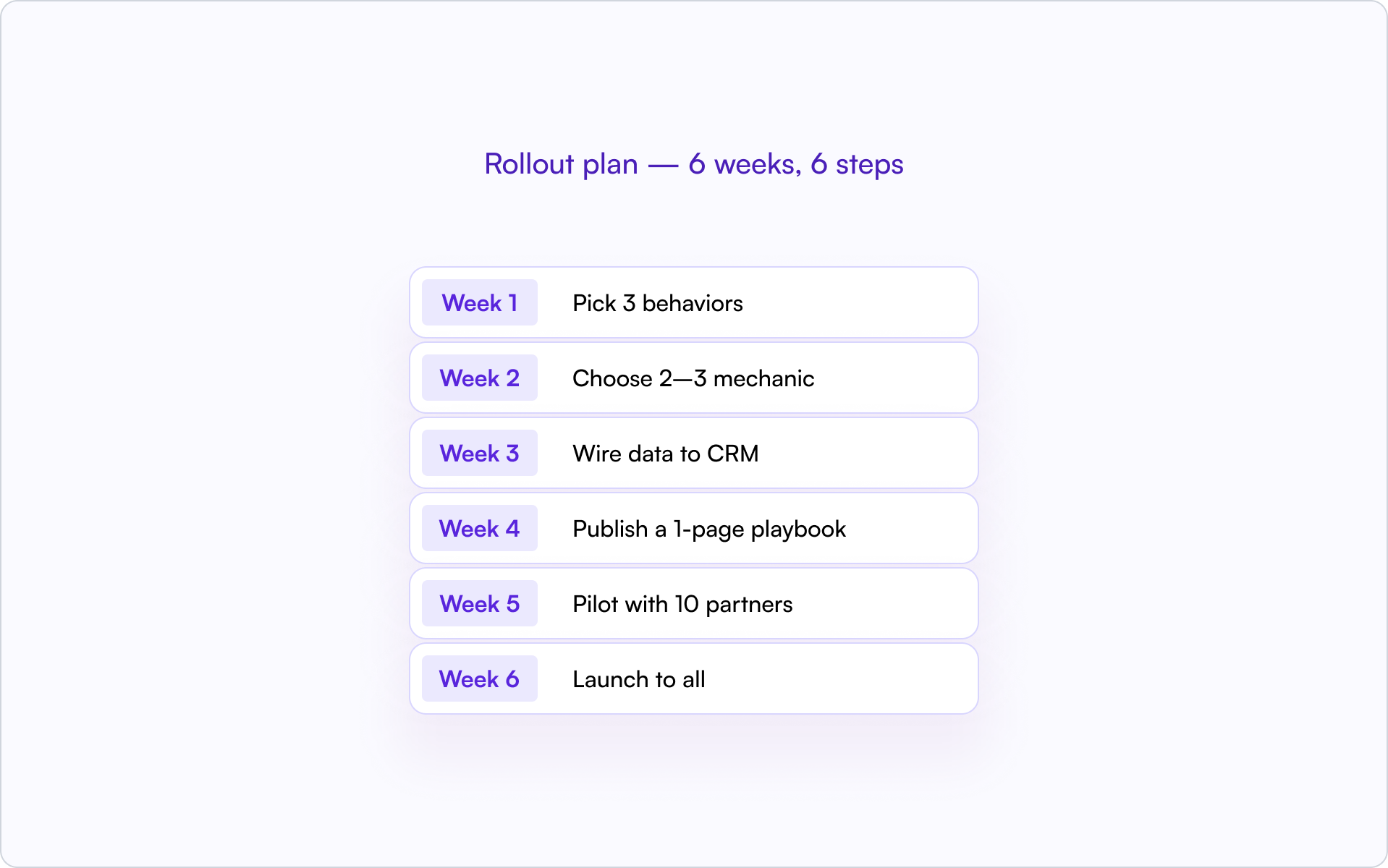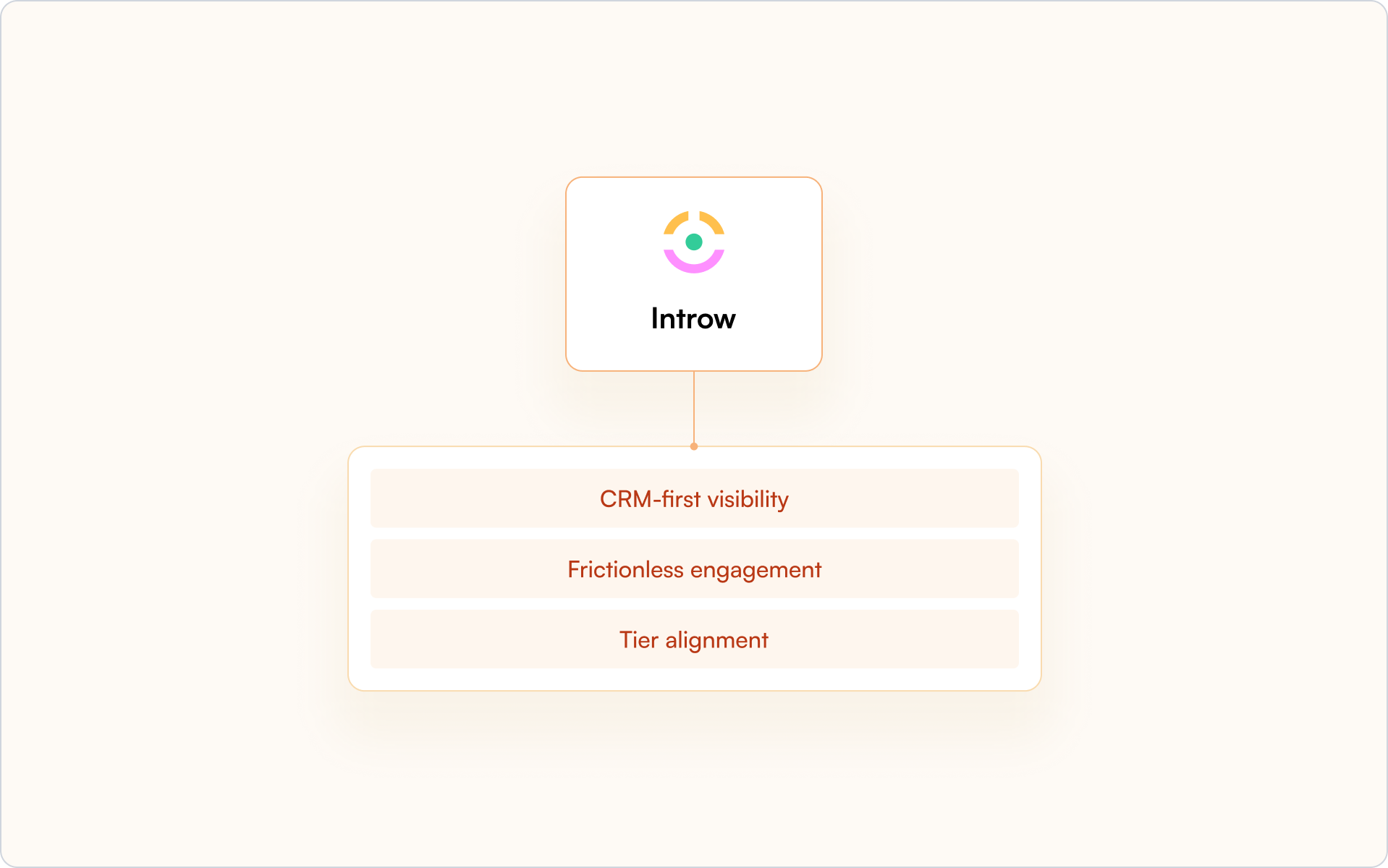In 2026, partner ecosystems have become major revenue drivers, with SaaS businesses increasingly relying on alliances to expand market reach, drive co-selling, and enhance customer value.
Indeed, as companies shift from direct sales to collaborative go-to-market strategies, these partnerships provide access to new customers, industries, and geographies.
And as partner ecosystems rose to prominence, SaaS partner teams realized they desperately needed partner relationship management (PRM) tech that could keep up.
After all, traditional PRM methods like spreadsheets and static portals lack the scalability, real-time insights, and automation that modern partner collaboration demands.
A modern PRM tool, on the other hand, streamlines partner management with deep visibility, effective collaboration, and accurate forecasting.
Users enjoy enhanced efficiency, accelerated deal cycles, and stronger partner engagement.
Ultimately, as companies prioritize ecosystem-led growth, adopting modern PRM solutions has become essential for managing partnerships effectively and staying competitive and connected in evolving markets.
In this guide, we aim to help SaaS partner teams discover the top PRM platforms for scaling revenue through better pipeline visibility, lead flow, and co-selling.
Read on to discover your new favourite platform.
What to Look for in Partner Relationship Management Software
Ready to upgrade your PRM system, but not sure where to start?
It's a big decision — and one you really want to get right.
After all, choosing the right PRM software for your business can be the difference between a flourishing partner ecosystem and a flop.
With this in mind, here's a handy checklist of what to look for in your PRM software in 2026:
- Native customer relationship management (CRM) integration (Salesforce, HubSpot)
- Deal and lead registration workflows
- Real-time partner engagement tracking
- White-labeled portals and partner segmentation
- Off-portal collaboration (email, Slack)
- Forecasting and reporting capabilities
- No-code customization and scalability
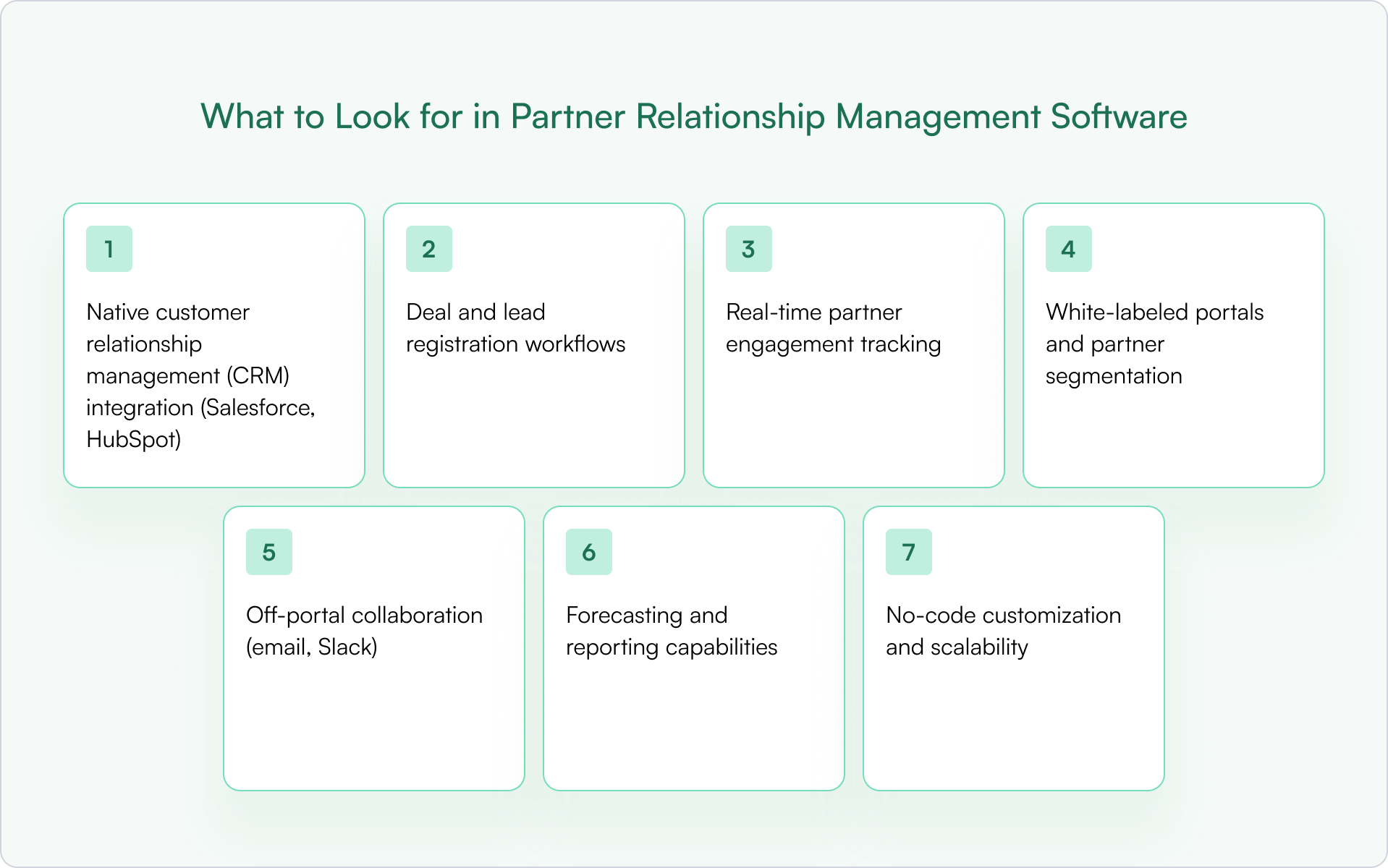
20 Best Partner Relationship Management Software Platforms in 2026
Ready to choose a shiny new partner relationship management platform?
Read on for 20 of the best tools on the market.
#1 Introw

Meet Introw — a next-generation PRM with CRM integration at its core.
Purpose-built for SaaS companies that use Salesforce or HubSpot, it offers off-portal collaboration and takes just minutes to implement (no code).
This platform is perfect for SaaS businesses that have two or more partner/channel managers.
It streamlines partner deal flow, automates engagement tracking, and powers co-selling — all without leaving the CRM.
Check out Introw's key features:
✅ CRM-first: All data stays in Salesforce/HubSpot
✅ Real-time pipeline visibility & forecasting
✅ Partner tracking software (emails, content, updates)
✅ Off-portal collaboration via Slack and email (no logins needed)
✅ Easy deal & lead registration via forms or email
✅ Scales from 20 to 300+ partners with custom workflows
✅ No-code setup, modular architecture
Introw can help you take your partnership ecosystem to the next level. But don't just take our word for it, book a demo today to see Introw in action.
#2 Allbound

Allbound is a Partner Relationship Management platform designed to automate partner program management and foster ecosystem growth.
It offers tools for partner engagement, co-marketing, and co-selling and provides comprehensive insights to enhance collaboration and drive revenue.
Key features include:
✅ Partner engagement tools
✅ Content library and management
✅ Learning tracks and certifications
✅ Co-branding and prospect pages
✅ Market development funds (MDF) management
✅ Lead distribution engine
✅ Deal registration system
✅ Playbooks for guided selling
✅ Gamification and incentives dashboard
✅ Channel Insights and Reporting
✅ CRM Integrations with Salesforce, HubSpot, and more
Pricing: Allbound offers custom pricing, depending on your needs.
#3 PartnerStack
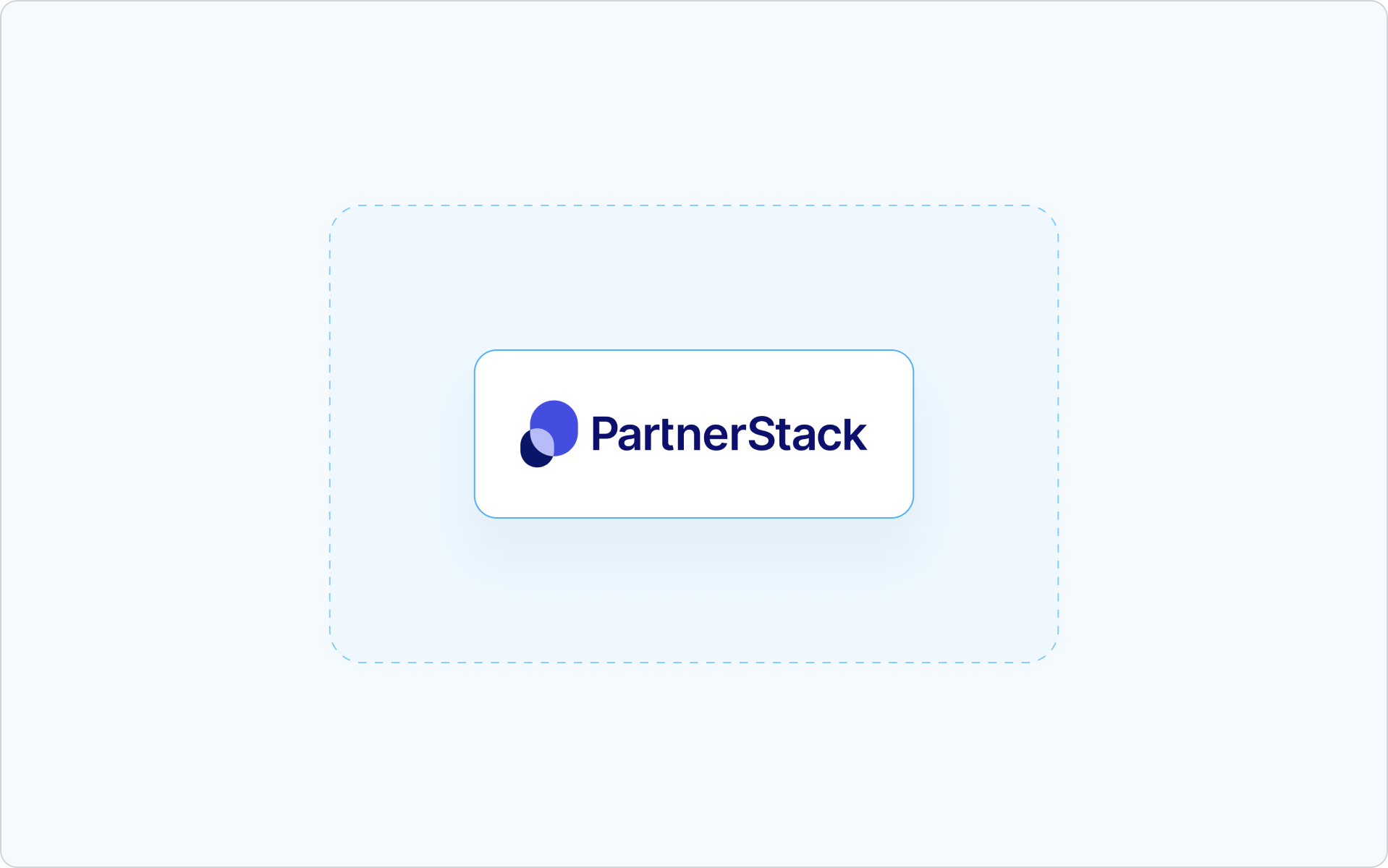
PartnerStack simplifies and scales partner ecosystems for B2B SaaS companies.
It connects businesses with affiliates, referral partners, and resellers to drive growth, increase sales, and streamline management.
With automation and robust tools, PartnerStack helps companies recruit, manage, and optimize their partnerships effectively.
Key features:
✅ Recruit partners
✅ Track partner performance
✅ Activate partners with training
✅ Automate partner commissions
✅ Optimize performance with reports
✅ Access a large B2B partner network
✅ Scale partner programs for growth
Pricing: PartnerStack creates a bespoke pricing plan for each client.
#4 Channeltivity
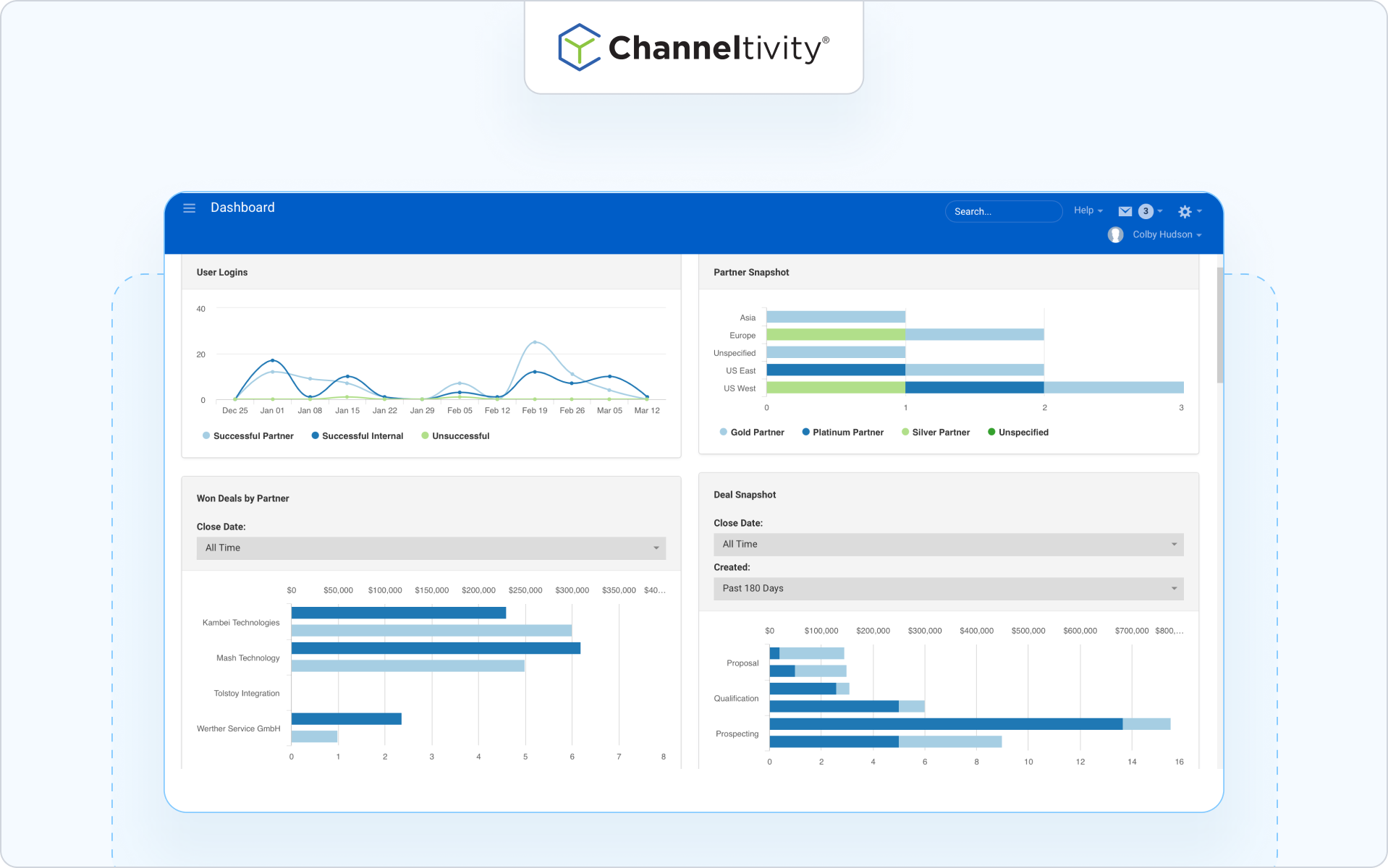
A comprehensive PRM platform, Channeltivity is designed to streamline partner recruitment, enablement, and sales.
It offers an intuitive, scalable solution for managing partnerships, enhancing productivity, and driving growth through marketing, training, and collaboration tools.
Check out the software's major features:
✅ Partner portal
✅ Lead distribution
✅ MDF management
✅ Deal registration
✅ Training and certification
✅ Email marketing
✅ Co-branded collateral
✅ Integrations with Salesforce, HubSpot, and more
✅ Analytics and reporting
✅ Distributor management
It is worth noting that many of the key features above come at an extra cost.
Pricing: Channeltivity's Standard Edition costs $1899 per month, and its CRM Edition (with CRM integration) costs $2199 a month. You can also buy add-ons, such as distributor and MDF management, for an extra monthly cost.
#5 Kiflo
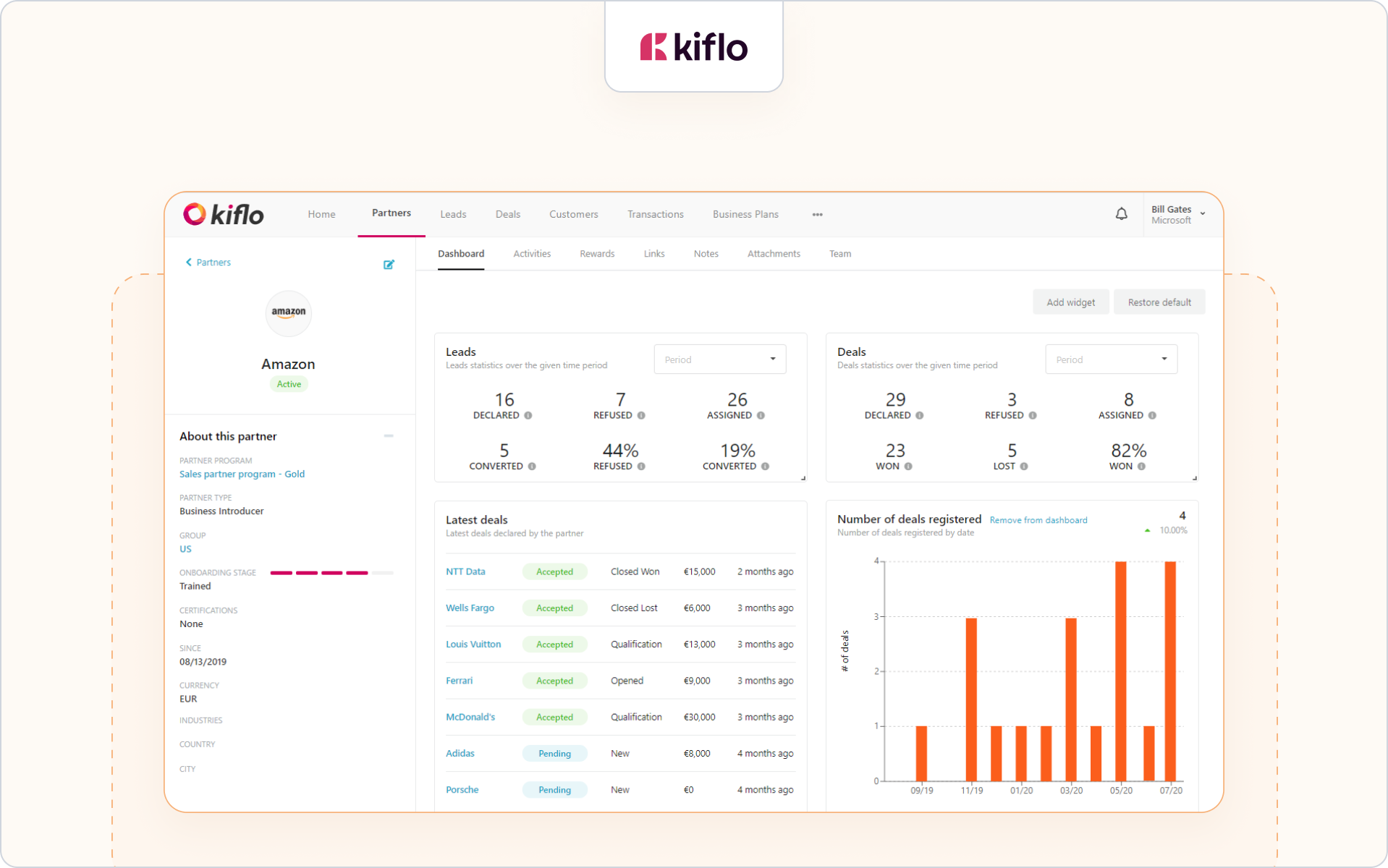
Kiflo helps businesses efficiently manage their entire partner lifecycle.
This PRM simplifies processes like partner onboarding, revenue tracking, and commission automation while providing transparency for both businesses and their partners.
Key features include:
✅ Partner onboarding automation
✅ Partner revenue tracking
✅ Commission automation
✅ CRM integrations (Salesforce, HubSpot)
✅ Self-service partner portal software
✅ Performance analytics
✅ Lead management
✅ Customizable workflows
Pricing: Kiflo offers a 'Scale' package, priced at $362 per month, for companies just launching their partner program. Custom pricing is offered for businesses with growing partner programs that are ready to scale.
#6 Salesforce PRM

One of the biggest names when it comes to CRM, Salesforce also offers a wide range of partner relationship management tools to help businesses manage and optimize partner networks.
It enables better partner performance tracking, lead distribution, and deal registration, all within a unified CRM ecosystem to drive growth and streamline partner engagement.
Key features:
✅ Partner onboarding
✅ Deal registration
✅ Lead management
✅ Performance tracking
✅ Collaborative tools
✅ Customizable partner portals
✅ Analytics and reporting
✅ Integration with Salesforce CRM
Pricing: Salesforce offers bespoke pricing depending on your requirements.
#7 Zinfi
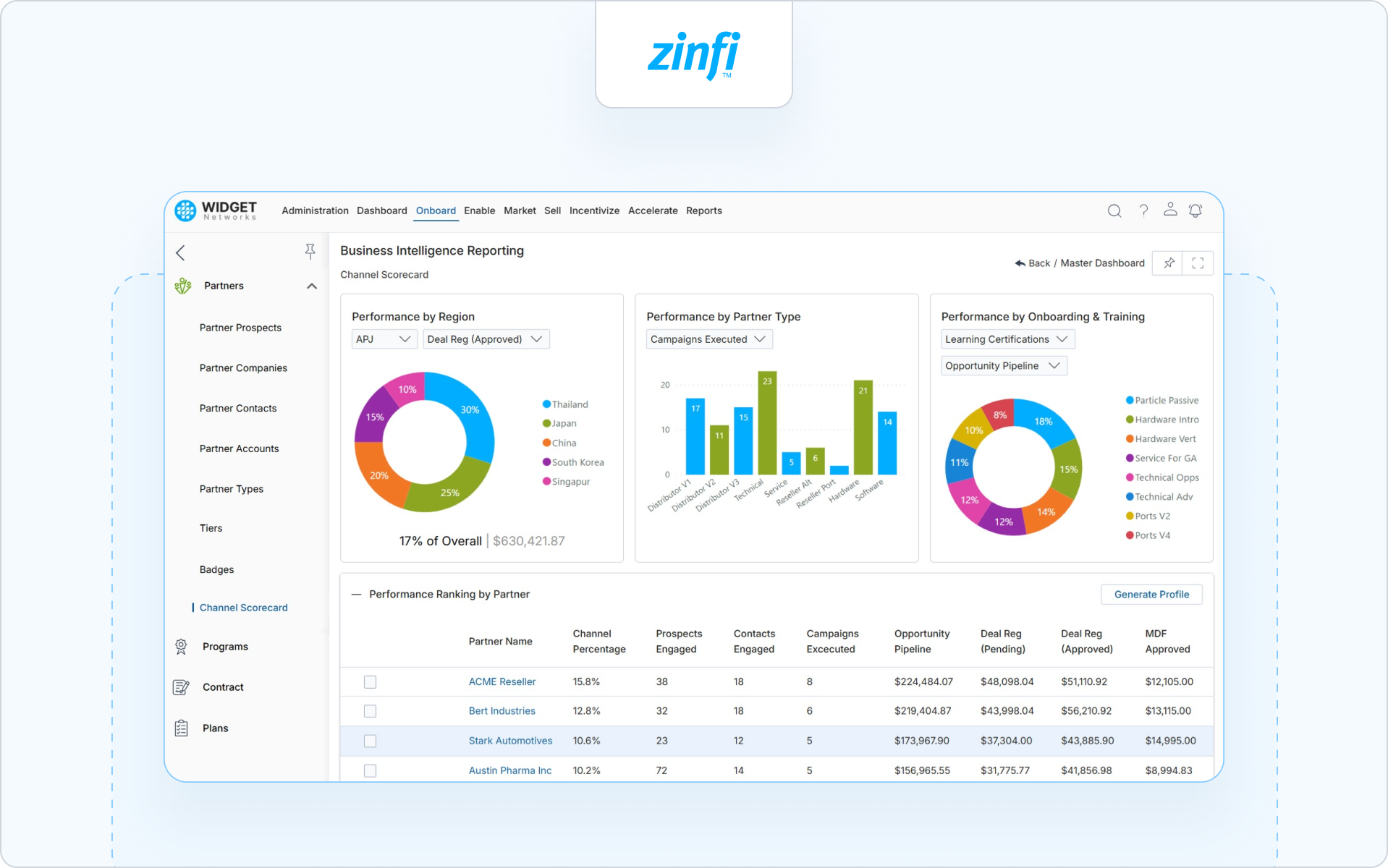
Zinfi offers a robust PRM solution designed to enhance channel partner performance with tools that streamline onboarding, enable efficient contract management, and improve collaboration.
Key features:
✅ Partner onboarding automation
✅ Lead distribution and management
✅ Deal registration
✅ Partner performance tracking
✅ Contract management
✅ Customizable partner portals
✅ Marketing and sales enablement tools
✅ Incentive and rebate management
Pricing: Zinfi's pricing is bespoke.
#8 Channel Mechanics PRM
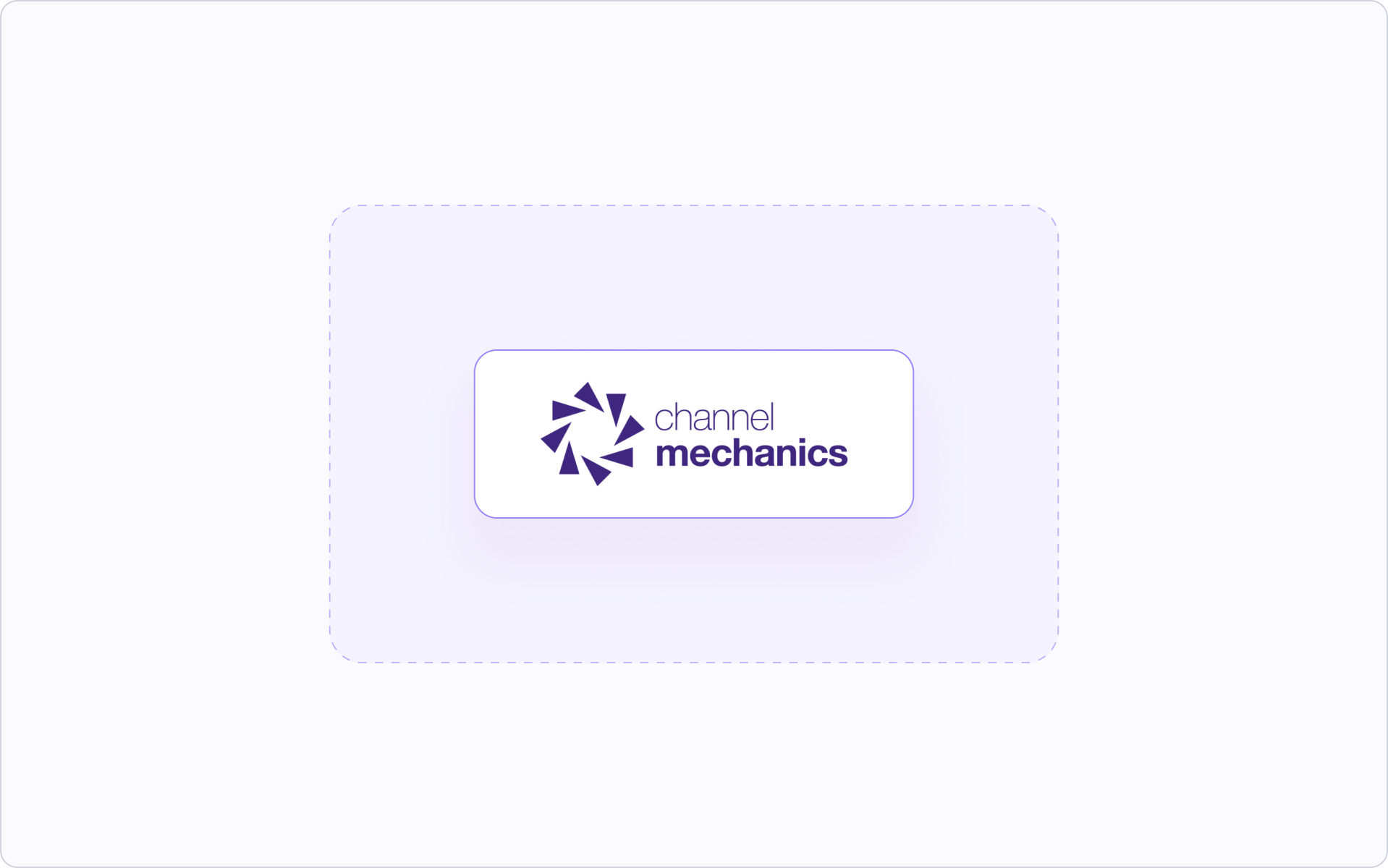
Automate your channel partner programs with Channel Mechanics.
This platform enables streamlined management of partner incentives, promotions, and rewards, helping to differentiate and engage partners more effectively.
Check out the highlights:
✅ Partner journey automation
✅ Incentive program management
✅ Real-time reporting and analytics
✅ Market segmentation
✅ Partner differentiation
✅ Budget control for programs
✅ Automated partner communication
✅ Deal registration and tracking
Pricing: Custom pricing.
#9 Impartner
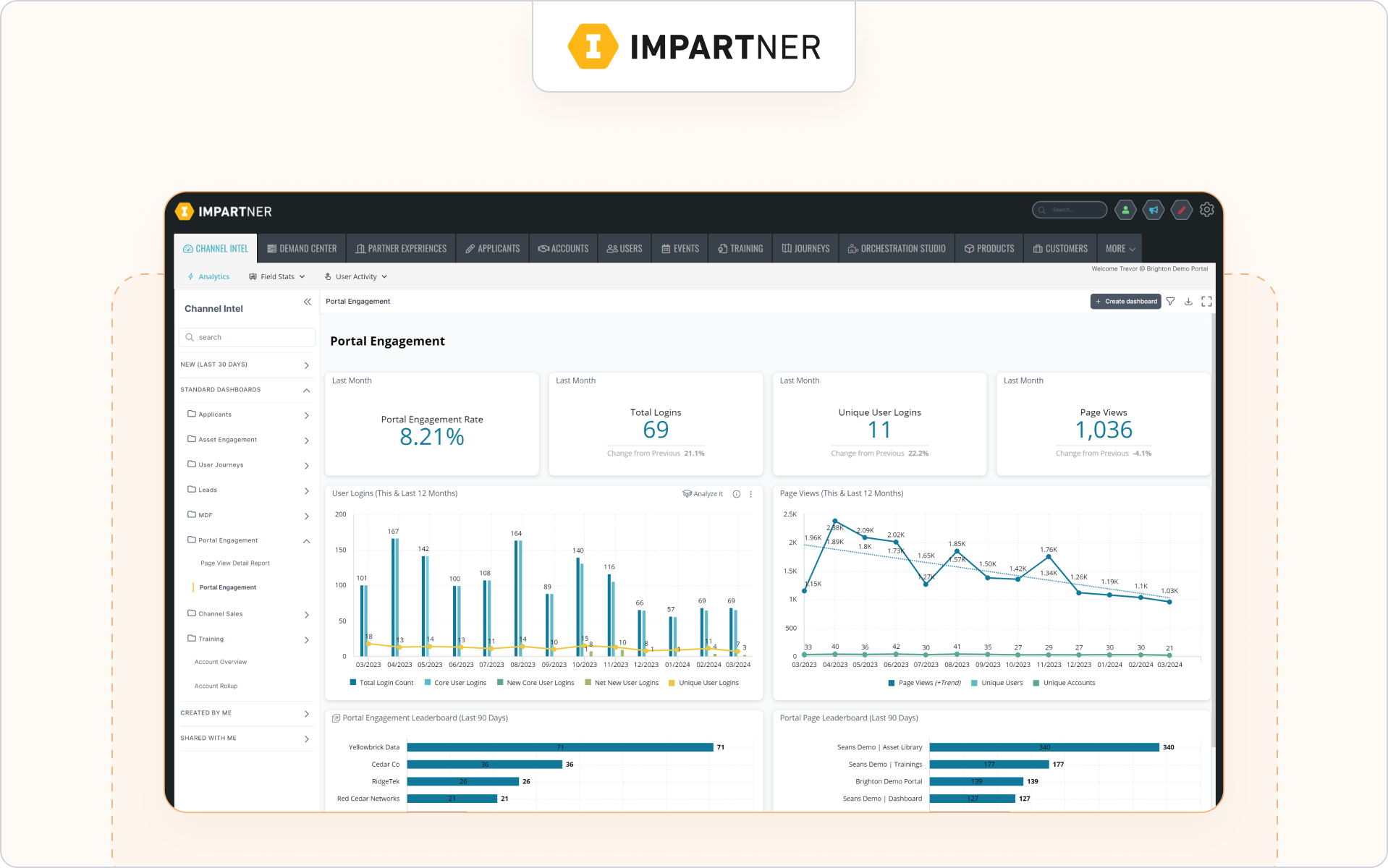
Impartner is a partner relationship management platform designed to automate and streamline the partner lifecycle.
It integrates seamlessly with existing systems to boost collaboration and accelerate revenue growth across partner ecosystems.
Take a look at the key features:
✅ Personalized partner onboarding
✅ Deal registration and pipeline management
✅ Performance tracking
✅ Marketing automation
✅ Tiering and compliance management
✅ Reporting and analytics
✅ Incentive management
✅ Partner business planning
Pricing: Businesses can request personalized pricing.
#10 Zift Solutions

Zift Solutions provides a comprehensive platform for channel management, enabling seamless partner engagement and program optimization.
Its PRM focuses on automating and streamlining partner operations, improving efficiency, and enhancing collaboration with partners to drive greater performance and ROI.
Key features include:
✅ Partner onboarding and enablement
✅ Deal registration and lead management
✅ Incentive and reward programs
✅ Real-time analytics and reporting
✅ Customizable partner portals
✅ Automated marketing tools
✅ Performance tracking and visibility
✅ Seamless CRM and system integrations
Pricing: Zift offers custom pricing.
#11 Mindmatrix

Mindmatrix offers a PRM platform designed to enhance partner engagement and optimize channel performance.
It supports the entire partner lifecycle with onboarding, training, sales enablement, and tracking tools.
Key features:
✅ Partner onboarding and enablement
✅ Sales and marketing playbooks
✅ Asset and content management
✅ Performance tracking and reporting
✅ Lead management
✅ Incentive program automation
✅ Channel ecosystem visibility
✅ Mobile access for assets
Pricing: Custom pricing available on request.
#12 StructuredWeb
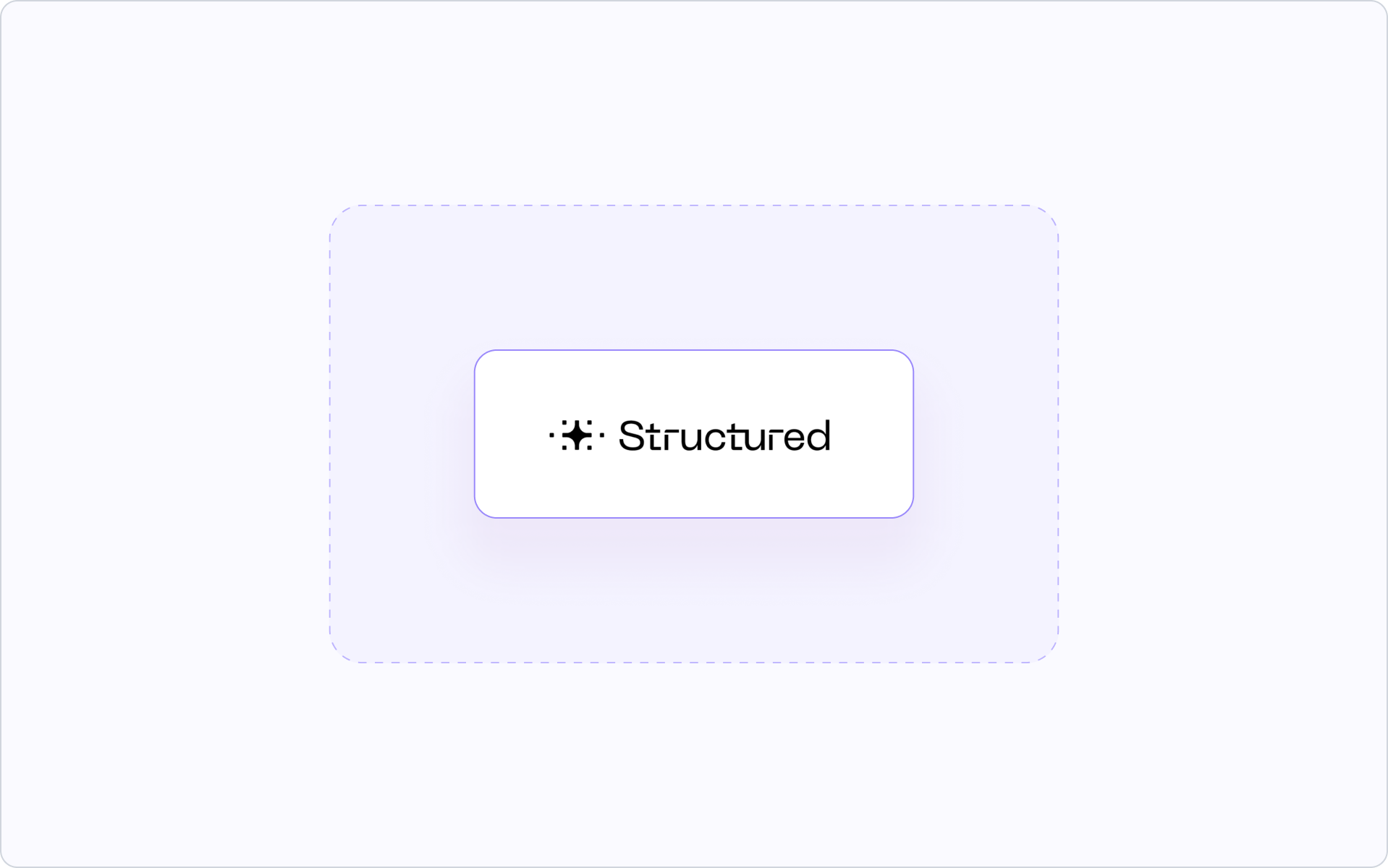
StructuredWeb is an easy-to-use PRM platform that simplifies and automates channel marketing, enhancing partner engagement and streamlining lead management.
Check out the key features below:
✅ Lead distribution and nurturing
✅ Deal registration
✅ Opportunity management
✅ Customizable partner portals
✅ Performance tracking
✅ Co-brandable collateral
✅ Automated marketing campaigns
✅ Analytics and reporting
✅ Real-time insights
Pricing: Custom.
#13 Crossbeam
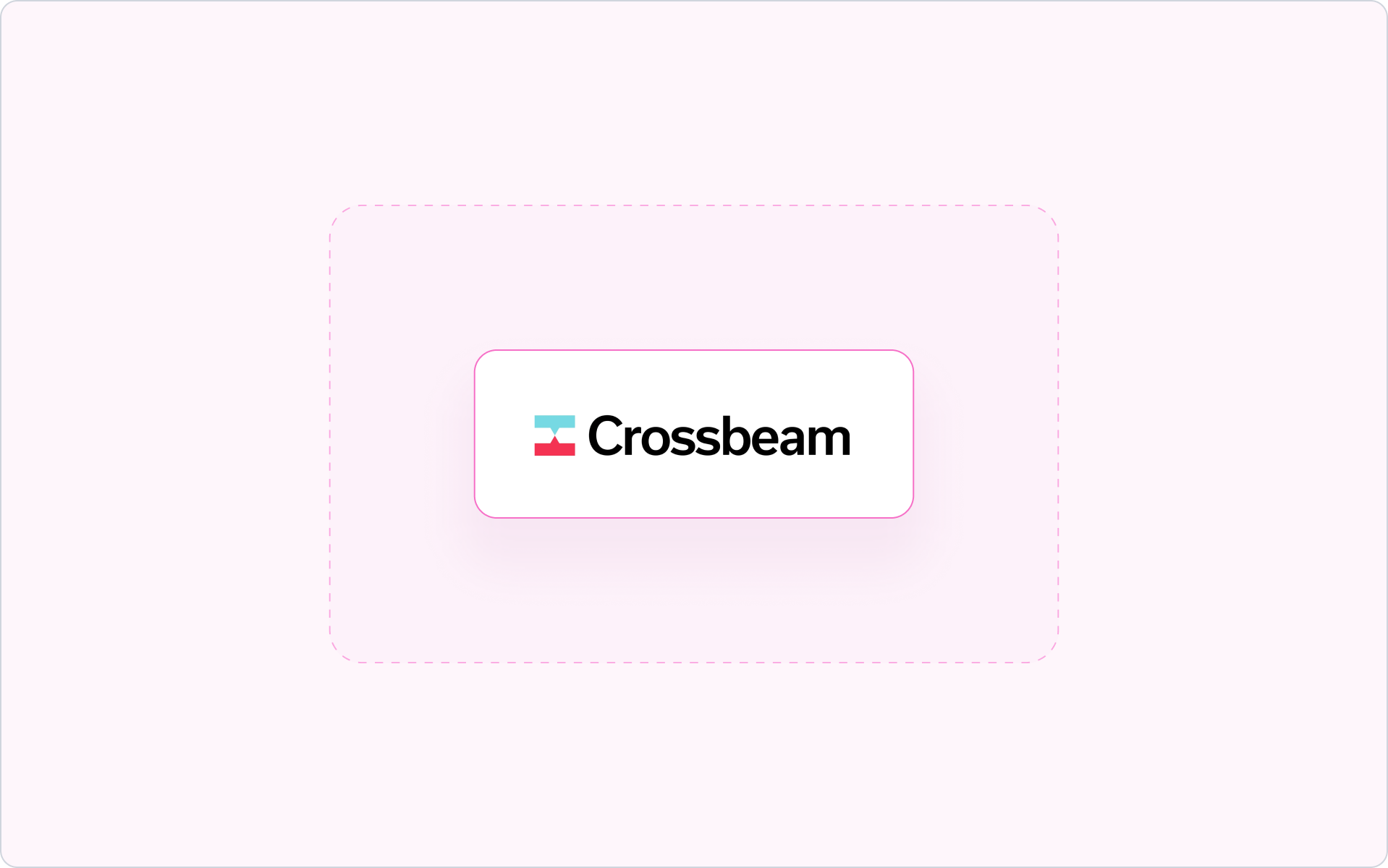
Crossbeam is an Ecosystem Revenue Platform that helps businesses collaborate with partners by securely sharing data.
It focuses on co-selling and driving mutual growth through insights into partner ecosystems.
Top tip — this platform is perfect for those looking for free partner relationship management software!
Highlights include:
✅ Account mapping
✅ Deal collaboration
✅ Partner performance tracking
✅ Shared lists for lead management
✅ Ecosystem insights
✅ Attribution and partner impact analysis
✅ Co-selling templates and workflows
✅ Real-time alerts and notifications
Pricing: Crossbeam offers several pricing plans, including Explorer (free), Connector ($150 per user per month), and Supernode (Custom). It also offers a Crossbeam for Sales option, which costs $300 per seat per year.
#14 PartnerPortal
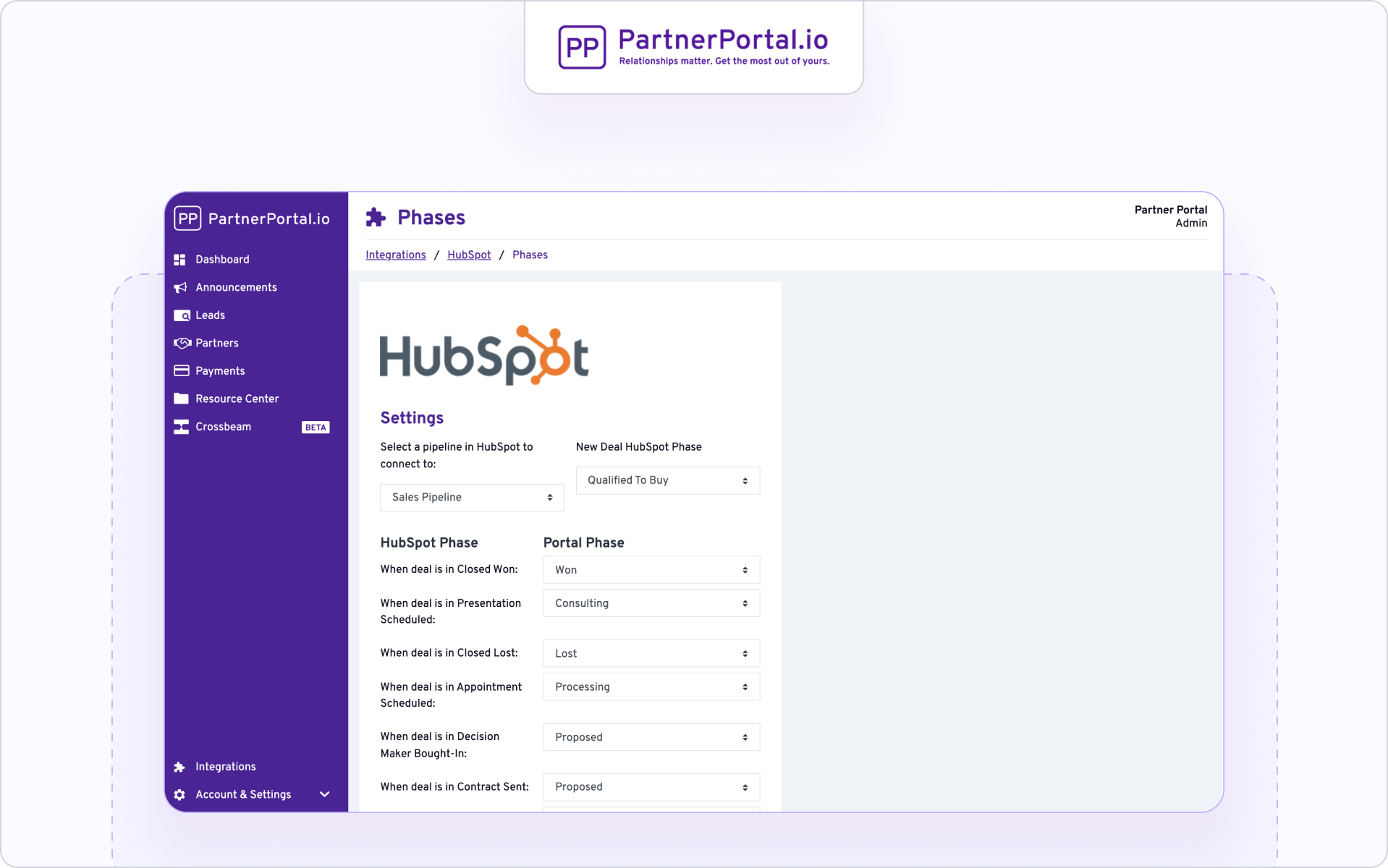
Keen to simplify and automate your partner program management?
Partnership management software PartnerPortal.io could be worth consideration.
This platform enables businesses to create custom partner portals, streamline deal registration, automate workflows, track partner performance, and manage partner payments.
Check out PartnerPortal's highlights below:
✅ Deal registration
✅ Partner onboarding automation
✅ Lead tracking and management
✅ Customizable portals
✅ Automated payments and accounting
✅ Performance metrics and analytics
✅ Resource management and sharing
✅ Ecosystem data discovery and co-selling
Pricing: PartnerPortal's unlimited package costs $249 per month, and it also offers a free trial for up to three staff, five partners, and five registered leads.
#15 Affise

Affise is a comprehensive performance marketing platform designed for affiliate and partner management.
It helps streamline partner onboarding, monitor activities, and automate commission payouts, improving collaboration and driving growth.
Its key PRM features are:
✅ Partner onboarding
✅ Deal tracking
✅ Performance analytics
✅ Commission management
✅ Fraud prevention
✅ Automated reporting
✅ Real-time data sharing
✅ Partner dashboard
Pricing: Affise offers four pricing tiers: Beginner, Core, Expand, and Custom. Prices are available upon request.
#16 Oracle PRM
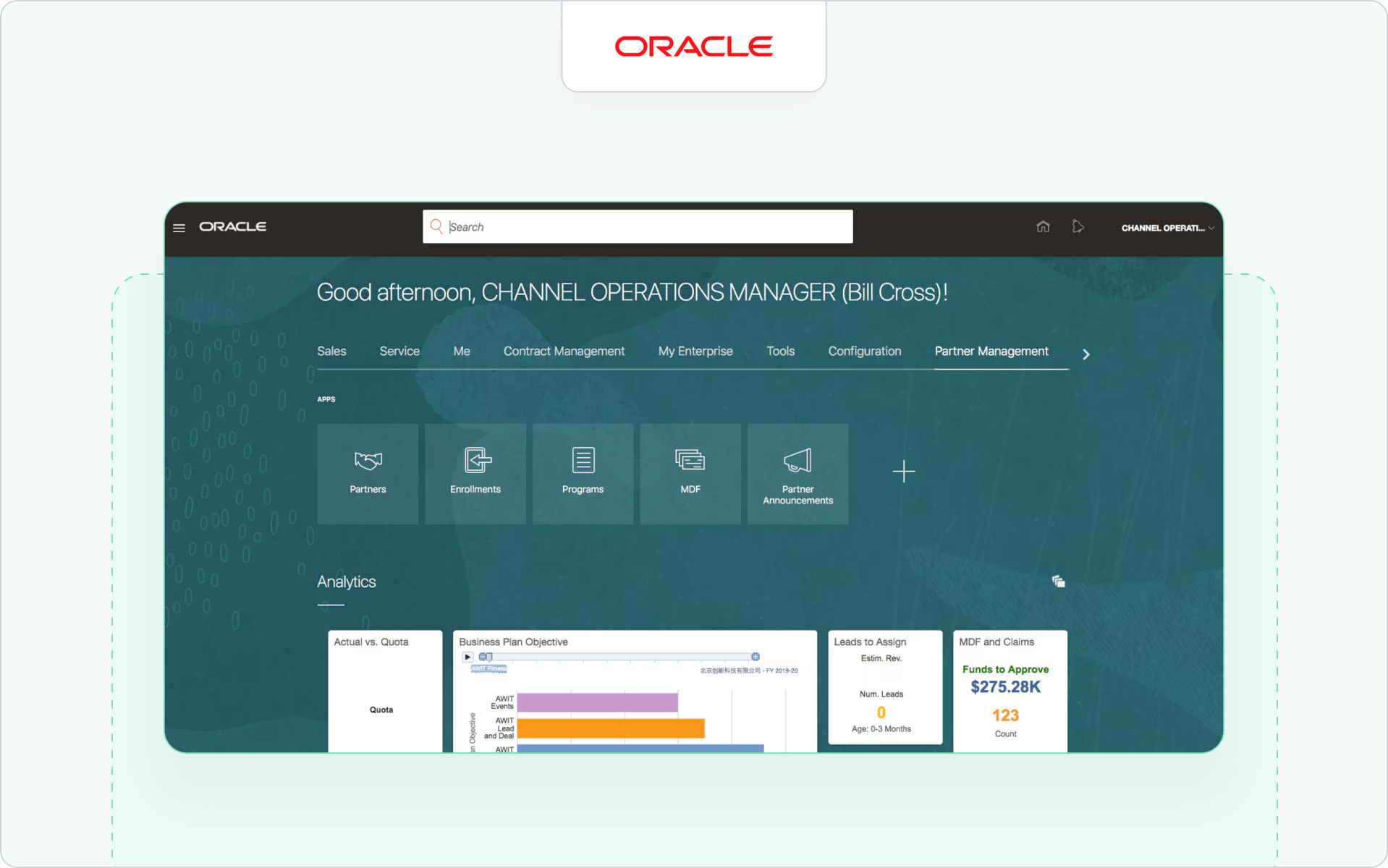
Oracle's PRM solution helps businesses manage and optimize their partner ecosystem.
The platform integrates key business processes to improve performance and maximize partner-driven revenue growth.
Key features include:
✅ Partner relationship management portal for collaboration
✅ Lead and deal management
✅ AI-guided selling
✅ Partner onboarding and recruitment
✅ Co-branded marketing tools
✅ Performance analytics and dashboards
✅ Incentive management
✅ Integrated sales and support tools
Pricing: Pricing is bespoke.
#17 CSG Digital Wholesale
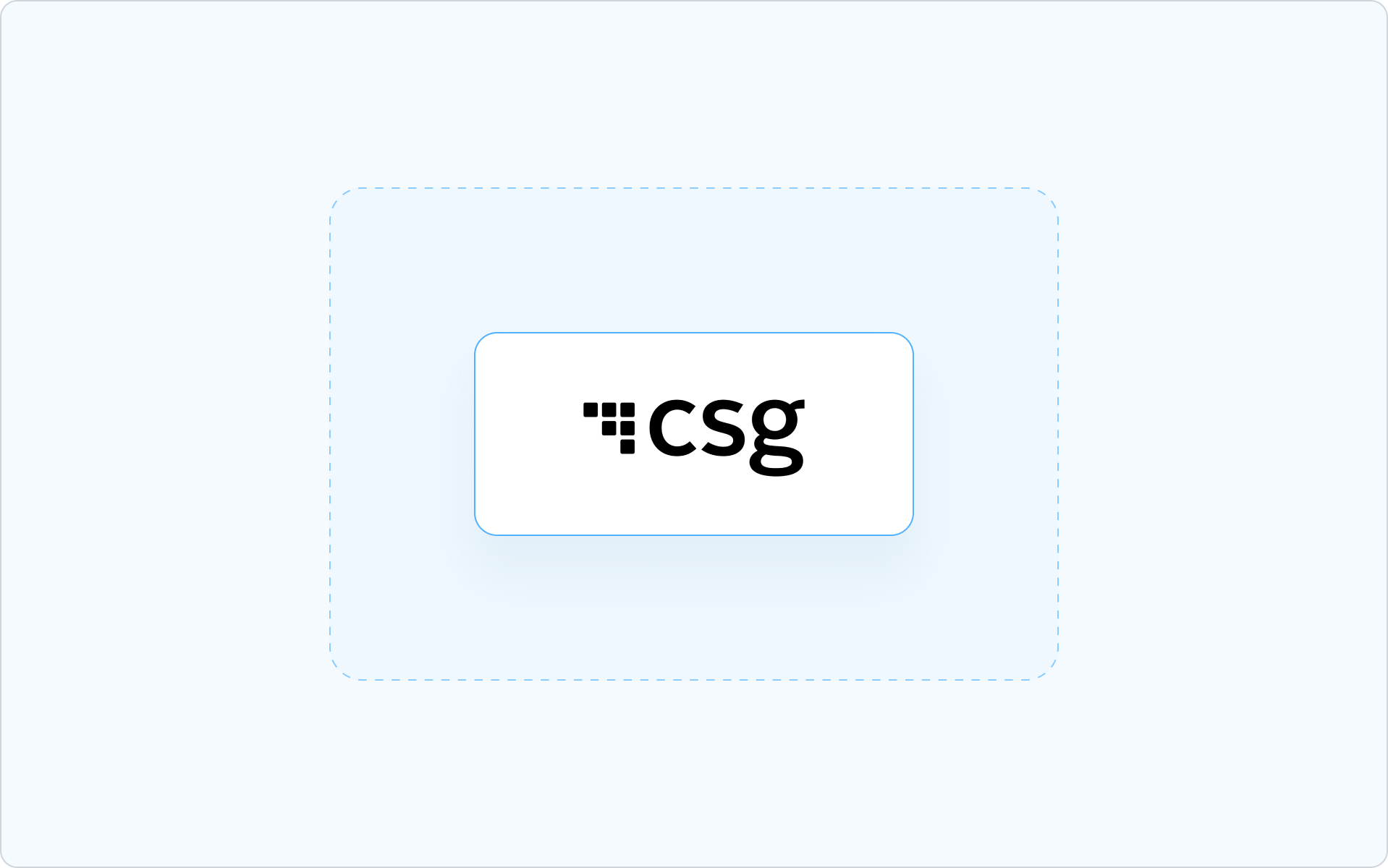
CSG's Wholesale Partner Management platform streamlines partner relationships through seamless onboarding, real-time data access, and automated processes.
It supports efficient partner communication, fraud protection, and service assurance, boosting revenue generation and operational efficiency.
The solution is flexible, scalable, and integrates with other partner platforms.
Here are the platform's key features:
✅ Automated partner onboarding
✅ Real-time traffic and statement access
✅ Fraud detection and service assurance
✅ Streamlined payment processes
✅ Flexible, scalable cloud SaaS deployment
✅ Integration with partner platforms via APIs
✅ Centralized partner lifecycle management
✅ AI-powered analytics for revenue growth
Pricing: Pricing is bespoke.
#18 NetSuite PRM
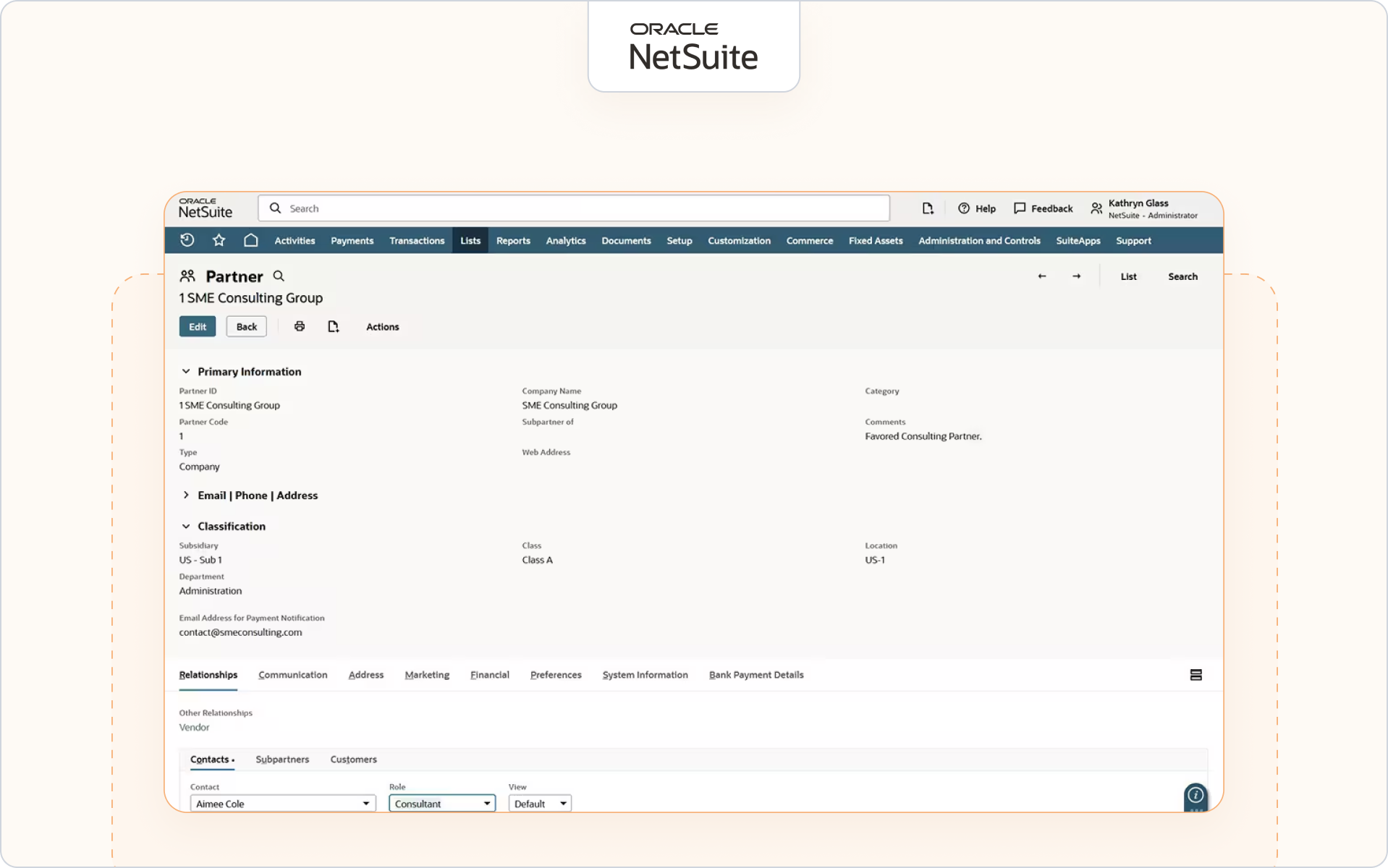
NetSuite's PRM solution helps organizations streamline partner interactions to optimize collaboration, boost revenue generation, and enhance transparency throughout the partner lifecycle.
Highlights include:
✅ Partner onboarding
✅ Deal and lead management
✅ Performance tracking
✅ Incentive management
✅ Real-time collaboration
✅ Customizable partner portals
✅ Marketing tools integration
✅ Analytics and reporting
Pricing: NetSuite PRM offers custom pricing.
#19 Magentrix PRM
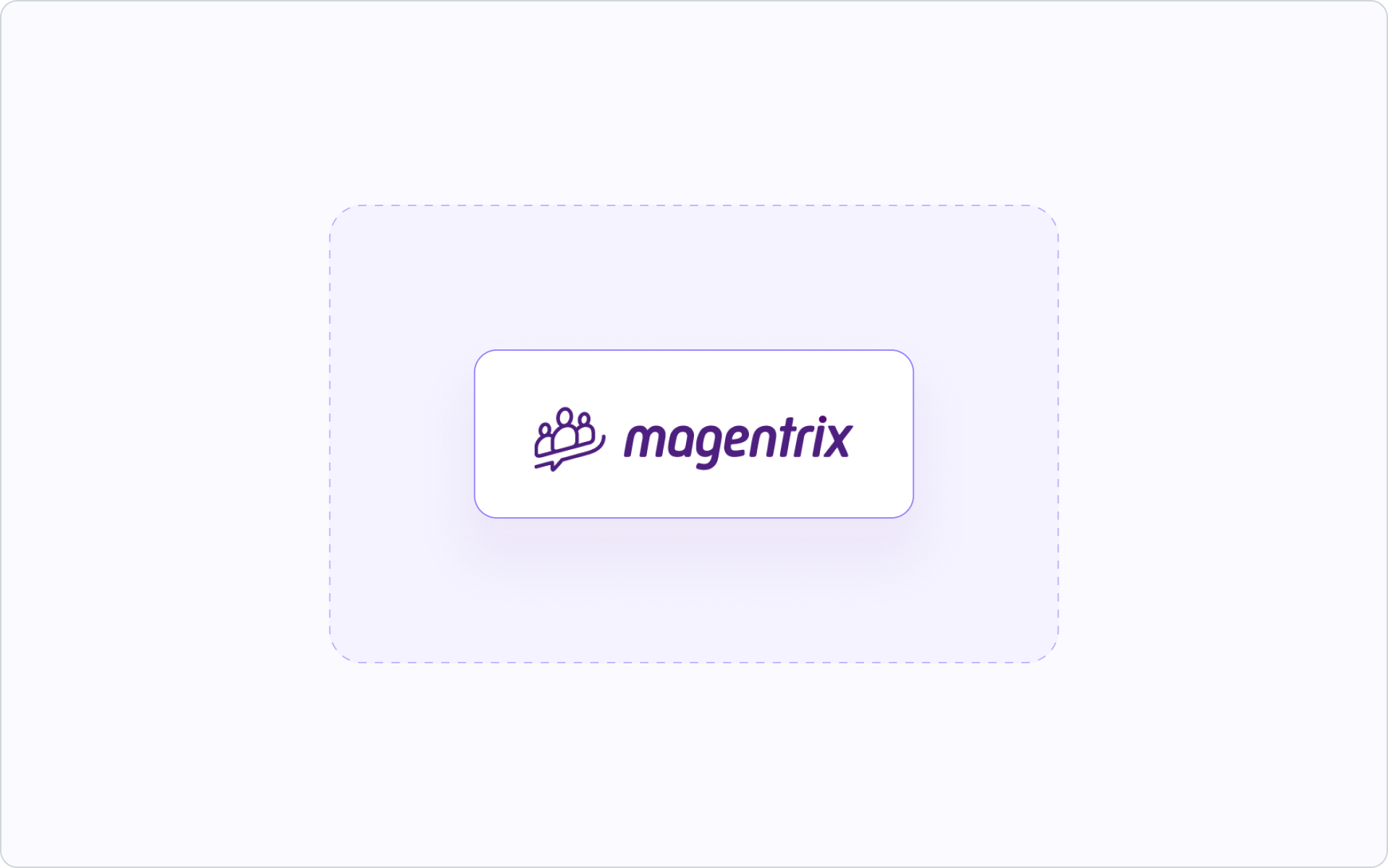
Magentrix offers customizable partner management software designed to streamline partner engagement.
With CRM integrations and a no-code interface, Magentrix simplifies managing partner networks and boosting collaboration.
Take a look at Magentrix's main features:
✅ Partner onboarding
✅ Lead distribution and management
✅ Customizable partner portals
✅ Performance tracking
✅ CRM integrations (Salesforce, HubSpot, Microsoft Dynamics)
✅ File-sharing and content management
✅ Co-branded marketing tools
✅ Partner self-registration
Pricing: The Essentials package starts at £1,000 per month, and the advance bundle costs upwards of $1200 per month, while the unlimited tier has custom pricing.
#20 360insights

360insights empowers businesses to manage and optimize channel relationships, drive engagement, and boost partner performance.
It provides channel incentives, rebates, and performance-tracking tools while aligning sales and marketing for increased partner loyalty and revenue growth.
Key features:
✅ Incentive and reward management
✅ Real-time performance tracking
✅ Partner engagement programs
✅ Channel sales and marketing alignment
✅ Rebate and MDF management
✅ Training and product knowledge
✅ Partner loyalty programs
✅ Customizable portals for collaboration
Pricing: Tailored pricing.
How to Choose the Best PRM Platform for Your Organization
It's clear that modern PRM systems are crucial for businesses looking to establish or grow their partner programs.
But how can you be sure you're choosing the very best partner relationship management tool for your business?
Here's a helpful checklist to assist professionals looking for a new PRM system:
- CRM fit – Ensure seamless integration with your existing CRM (e.g. Salesforce, HubSpot) to maintain a single source of truth.
- Partner workflows – Check if the platform supports your specific partner journey from onboarding to deal registration and performance tracking.
- Forecasting needs – Look for robust analytics that help predict partner revenue, pipeline trends, and market opportunities.
- Customization and scalability – Choose a PRM that adapts to business growth, industry, and evolving needs.
- Ease of use – Ensure an intuitive interface for both internal teams and partners.
- Automation capabilities – Streamline onboarding, lead distribution, and incentive programs with automation tools.
- Co-marketing and sales support – Evaluate features for content sharing, co-branding, and sales enablement.
- Security and compliance – Verify data protection, access controls, and compliance with relevant regulations
- Scalability - Ensure the platform can grow alongside your business.
- Partner engagement tools – Look for gamification, training modules, and communication features to boost partner participation.
- Support and implementation – Assess vendor support, onboarding assistance, and ongoing maintenance services.
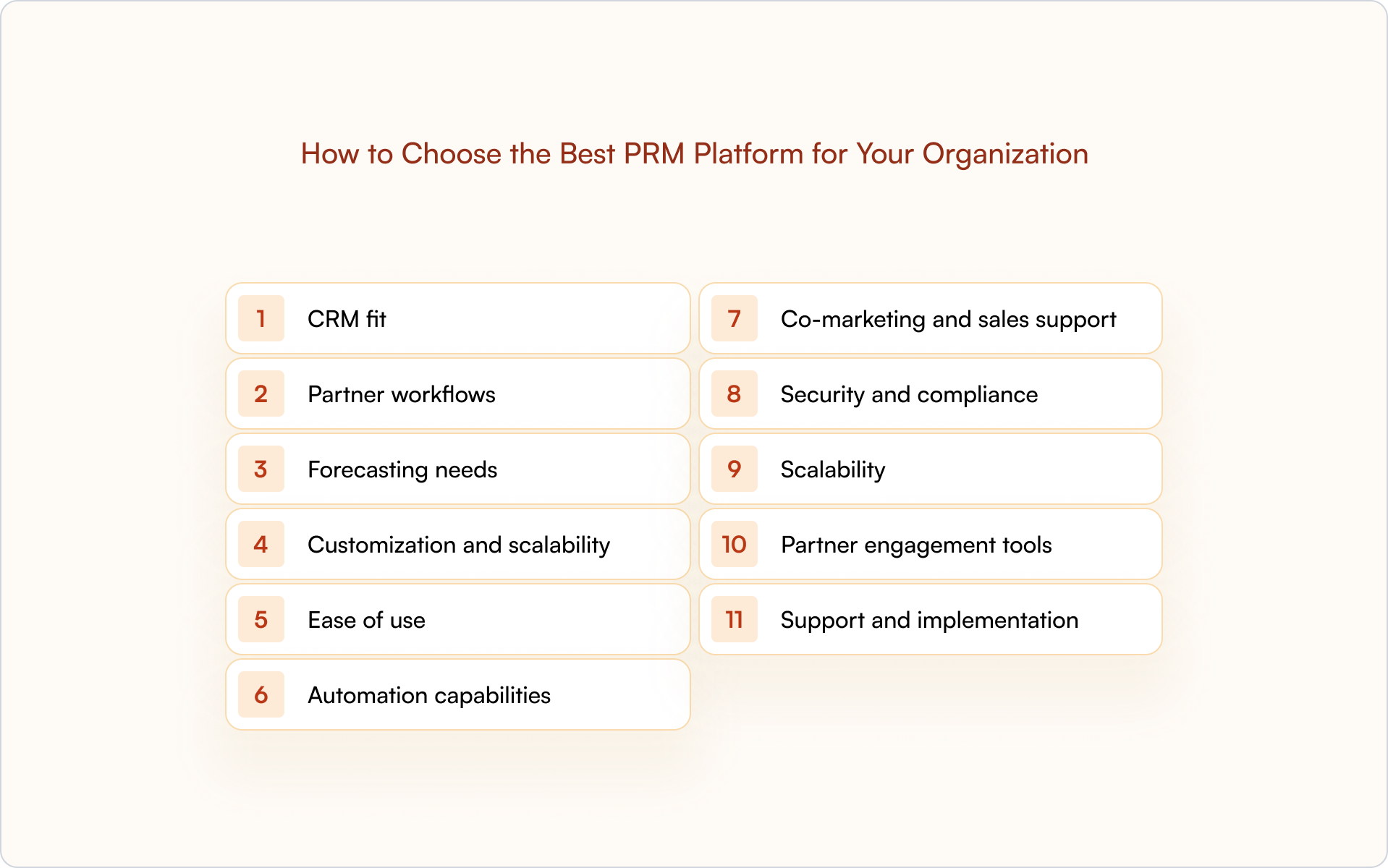
There are also a number of common mistakes you'll want to avoid when investing in PRM software.
Here are some of the biggest pitfalls to avoid.
- Forcing logins – Making partners log in for every small task reduces adoption and engagement.
- Skipping engagement metrics – Not tracking partner activity and success metrics leads to missed optimization opportunities.
- Overcomplicating the platform – A complex interface discourages partners from using the system.
- Lack of CRM integration – A PRM that doesn't sync with your CRM creates data silos and inefficiencies.
- Ignoring partner needs – Choosing a PRM system without considering partners' workflows and challenges.
- Failing to automate – Manually handling onboarding, deal registration, and incentives slows down efficiency.
- Neglecting training and support – Poor onboarding and lack of guidance hinder adoption.
- Choosing price over fit – Opting for the cheapest solution often leads to limited functionality and costly migrations later.
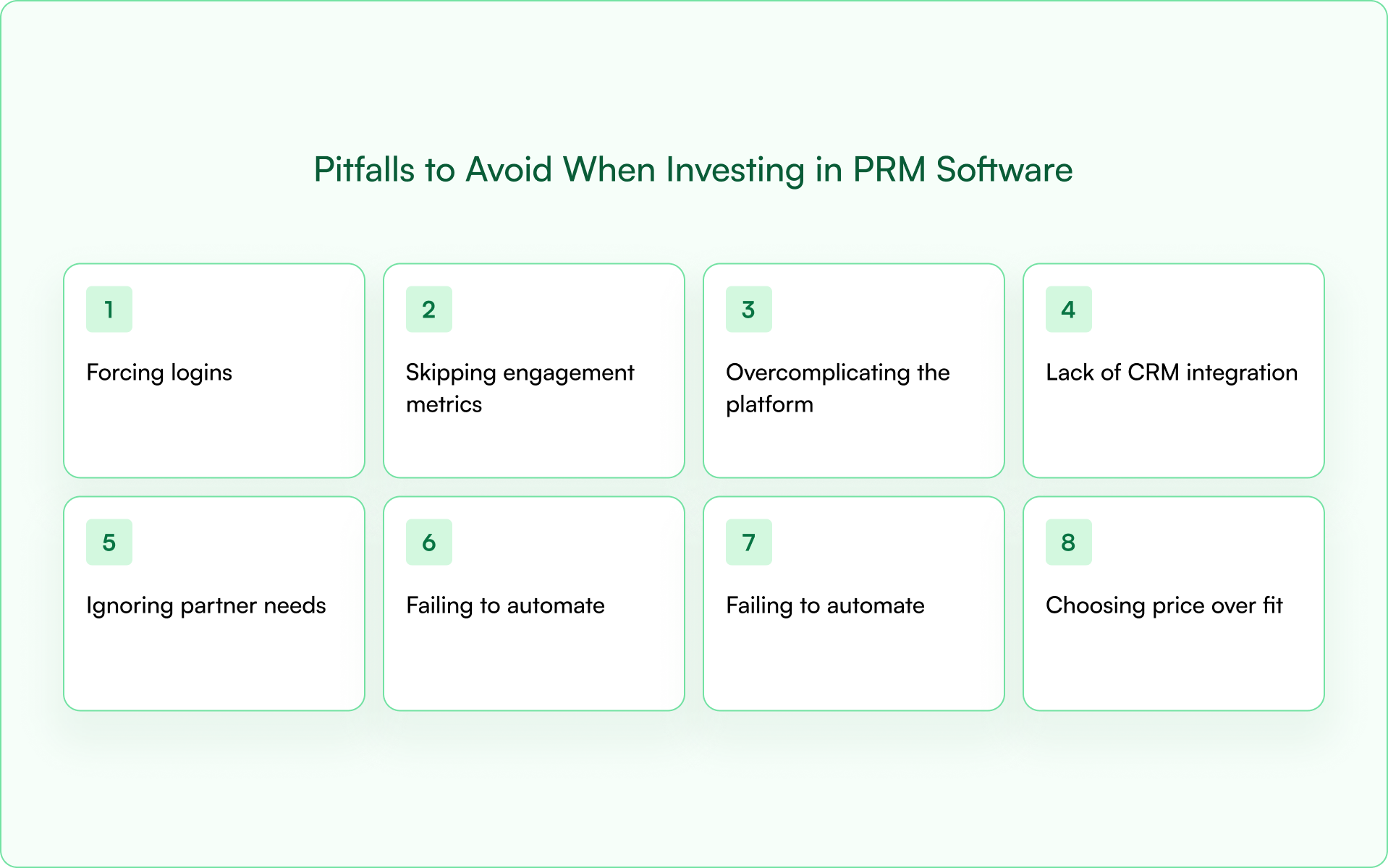
Why Introw Stands Out as the Best PRM Software in 2026
There are several reasons Introw is the very best partner management software you can invest in this year.
First up, CRM is at the platform's core.
This deep integration enables smooth, seamless processes and keeps your CRM as your single source of truth.
Oh, and this means no separate portals, which can lead to data discrepancies and low adoption.
What's more, Introw is tailor-made for RevOps, Partner Managers, and CROs, so it knows exactly what you want from it and delivers on those fronts every time.
Indeed, fire up Introw, and you can expect real-time insights, clean data, better alignment, improved pipeline accuracy, and less manual tracking.
It also boasts super easy and customizable modular workflows, and implementation takes just minutes as it doesn't involve code.

Conclusion
Ready to invest in game-changing PRM software?
Here's a recap of the top 20 PRM tools that drive revenue and scale up:
- Introw
- Allbound
- PartnerStack
- Channeltivity
- Kiflo
- Salesforce PRM
- Zinfi
- Channel Mechanics PRM
- Impartner
- Zift Solutions
- Mindmatrix
- StructuredWeb
- Crossbeam
- PartnerPortal
- Affise
- Oracle PRM
- CSG Digital Wholesale
- NetSuite PRM
- Magentrix PRM
- 360insights
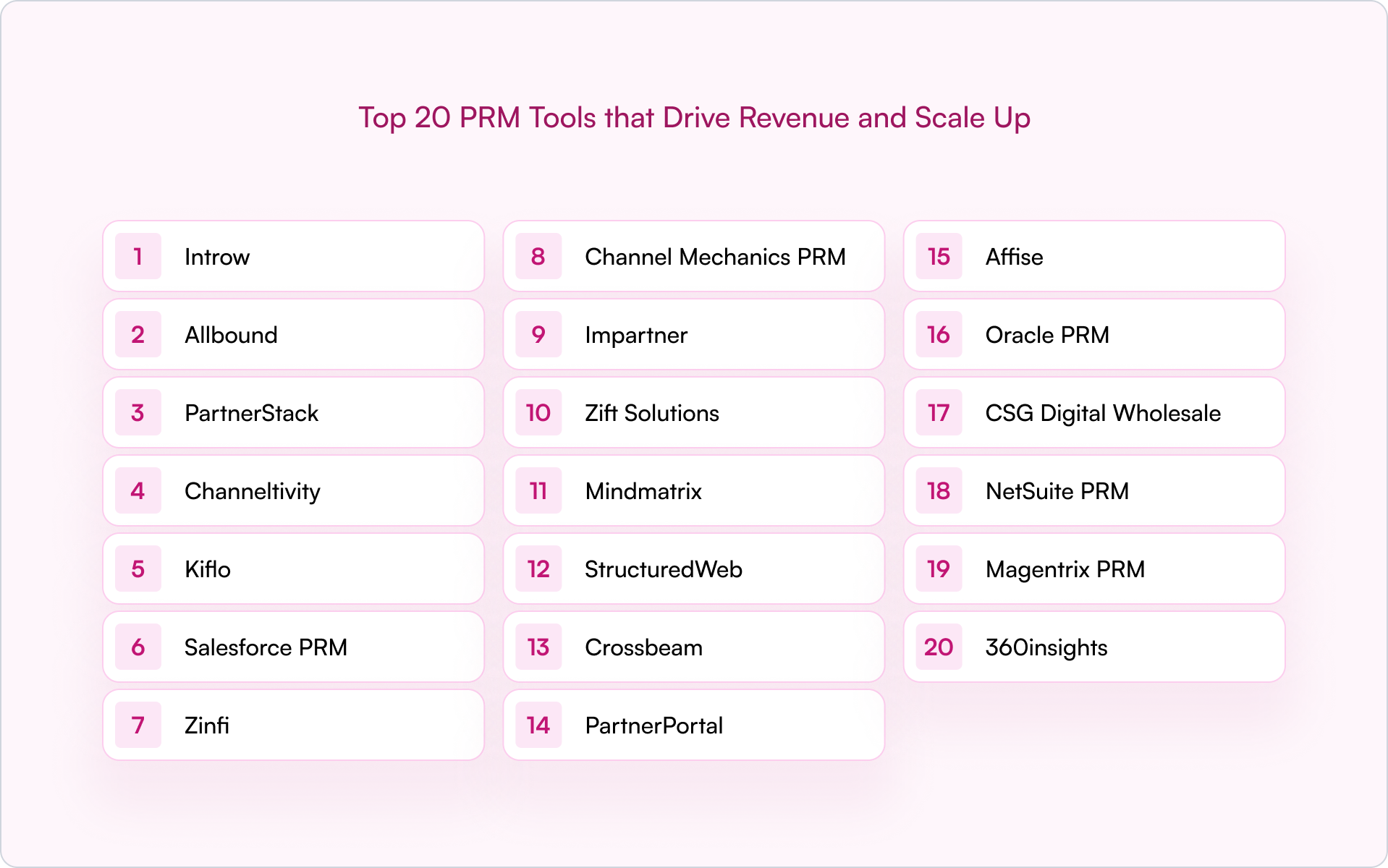
Remember — the right software simplifies co-selling, boosts forecasting accuracy, and saves ops time.
Ready to scale your partner ecosystem? Book your personalized Introw demo today.
What Is The Best Partner Relationship Management Software For 2026?
The best partner relationship management (PRM) software for your business will depend on your specific needs and circumstances. But whatever you want from a partner relationship management software, it's a safe bet that Introw will deliver.This cutting-edge, AI-powered platform is super simple to implement (think modular architecture and a no-code setup) and puts CRM at the heart of your processes. It offers real-time pipeline visibility and forecasting, partner engagement tracking, and off-portal collaboration via Slack and email, with no logins needed. Whatever the size of your business, there's an Introw solution for you: this software scales from 20 to 300+ partners with custom workflow.
How Does PRM Software Support Co-Selling And Deal Registration?
PRM software streamlines co-selling and deal registration by enabling seamless collaboration between vendors and partners. It provides a centralized platform for deal tracking, automated approvals, and conflict resolution. Real-time insights, pipeline visibility, and structured workflows enhance partner engagement, ensuring efficient lead management and improved sales alignment.
What makes CRM-native PRMs better than standalone tools?
CRM-native PRMs outperform standalone tools by integrating seamlessly with existing sales workflows, eliminating data silos, and providing real-time visibility into partner activities. They enhance efficiency with unified reporting, automated deal tracking, and streamlined collaboration. This approach ensures better direct and partner sales team alignment, improving pipeline accuracy and overall revenue growth.
Why Is Introw The Top Choice For SaaS Partner Teams in 2026?
Introw delivers a world-class PRM experience, making it invaluable for many SaaS partner teams trying to successfully manage partner relationships and encourage successful partners. Here are five major benefits to choosing Introw: 1. CRM-first experience (this means no separate portals) 2. Built for RevOps, Partner Managers, and CROs 3. Real-time insights, clean data, better alignment 4. Proven to reduce manual tracking, improve pipeline accuracy 5. Modular workflows for resellers, MSPs, referrals, and more


.svg)




















